Vehicles
Baltimore City Police Vehicles
The First Police Vehicles used in the Baltimore Police Department came beginning in 1909 based on a newspaper article dated 1911 which gave us the following count;
Auto Patrol vehicles have been added to the department subsequently as follows: The first vehicle ever came in May 1909, the second in May 1910, the third in June 1910, followed by the fourth in Aug 1910, fifth in July 1911, the sixth, seventh, and eighth all came in November 1911. In addition to these eight auto patrol units, there was a (Prisoner Transport Vehicle) known as “Black Maria”, a truck, and a machine (auto) each for Marshal Farnan and Deputy Marshal Manning, making a total of 11 automobiles purchased for the entire department from 1909 to 1911.

There was a news article from August 1907 that stated the Department was to receive a Columbia Electric Automobile when complete the machine was put to use in the Central District as an Ambulance, and Patrol/Paddy Wagon. It was said to have been easy to run, and easily made 16 miles an hour. Unlike the illustrated picture used to show Baltimore’s New Police vehicle, Baltimore’s Wagon would come with windows and curtains. From the article at the start of this page, it would appear the vehicle they order in late 1907, didn't make it to Baltimore until early to mid-1909. (Some things never change.)
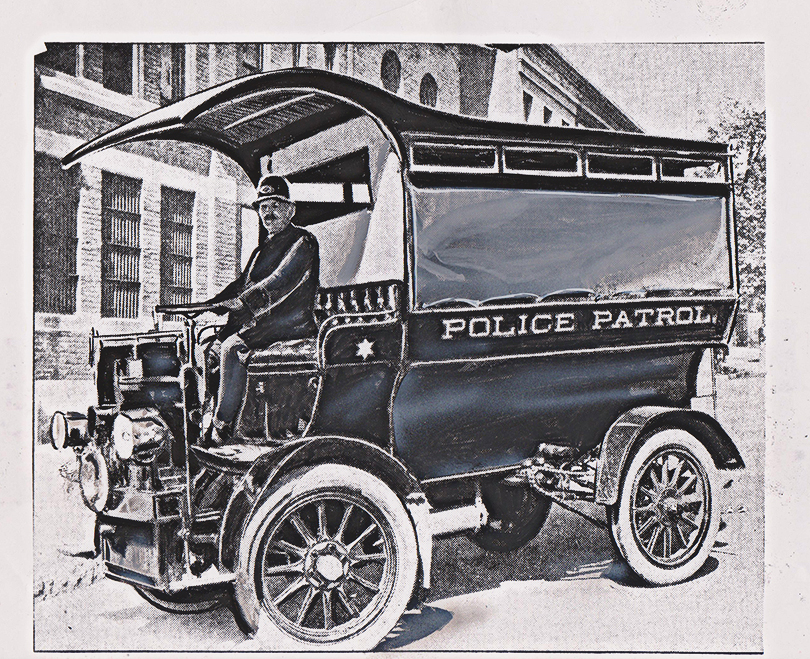
Courtesy Patricia Driscoll 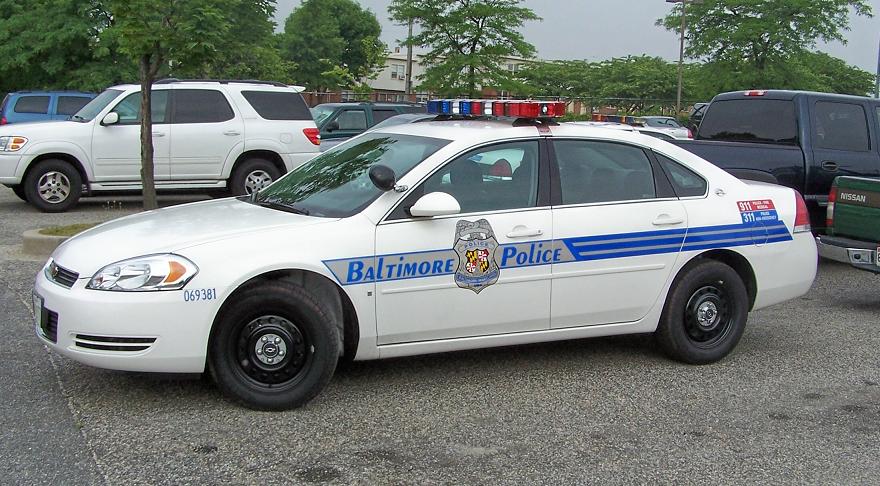 2006 Chevy
2006 Chevy
![]()
The Department settled on the new design and ordered 60 vehicles, there were only 30 in the country all white, with 30 more out of the country. The department took them, the black vehicles were imported back into the country and came to us; in the future, we will only have black, (unless they do as they did in the beginning and use white for T.I.S. and other traffic units) but initially, we had to take what was available. I like the black best, and think this is one of the best looking cars we've had in a long time. "Captain J. Eric Kowalczyk of the Baltimore Police Department said, “Our new vehicle design is an outward reflection of the inner change taking hold in the police department. It was designed by our officers and speaks to the pride they have for this organization.” Police Commissioner Anthony Batts said, “You may have seen pictures on social media of a new type of Baltimore Police vehicle. The picture shows a black caprice, with new markings. “Yes it is real, and yes it is coming. We are currently waiting on some remaining equipment to arrive before the vehicles can be deployed to the districts, but that is the future we are headed towards. “A number of months ago, a working group was convened by Colonel DeSousa, to see if there was any interest in a new look for our cars, and what equipment you wanted to see in them. “The result was very clear, and the design of the new cars is the same design that has been on Foxtrot for years. I want to make sure that you have a car that you can be proud of and I know you will be very happy with the cars when they come to the districts soon.”
 Courtesy Rick Ojeda
Courtesy Rick Ojeda
2014 Chevy Northern District
Northern District
3 Dec 2014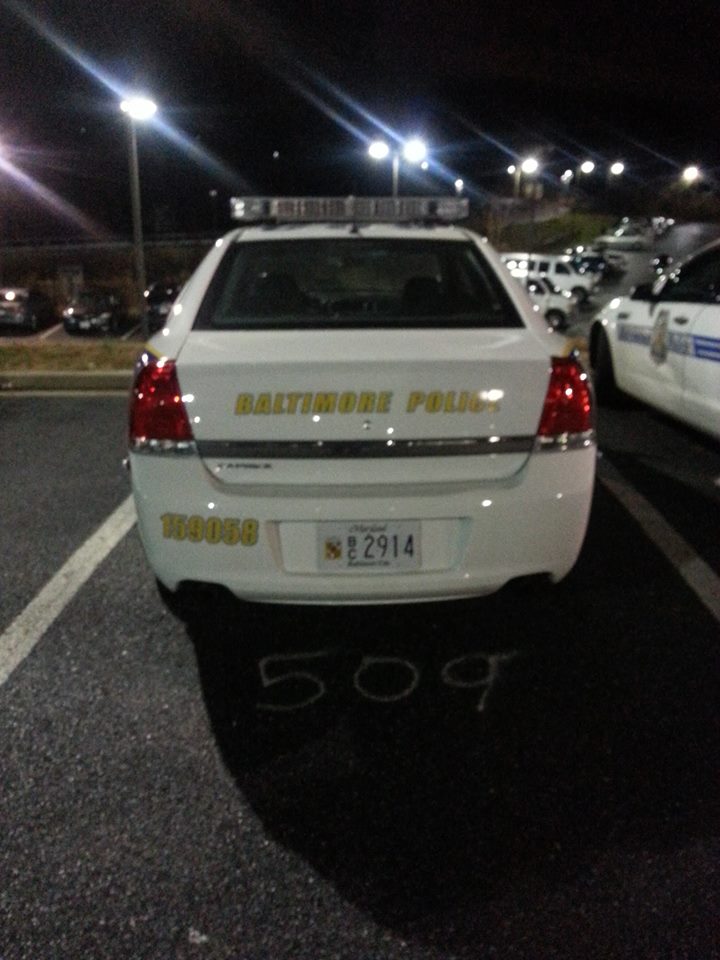 Northern District
Northern District
3 December 2014 3 December 2014
3 December 2014 3 December 2014
3 December 2014 3 December 2014
3 December 2014 3 December 2014
3 December 2014
![]()
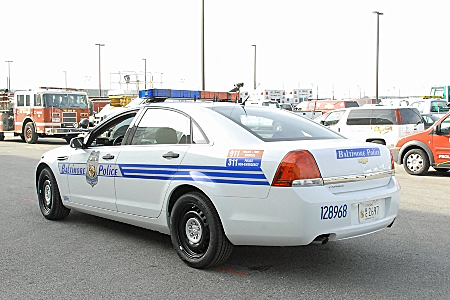
Courtesy of Jim Derreth
2012 BPD Chevy Caprice PPV
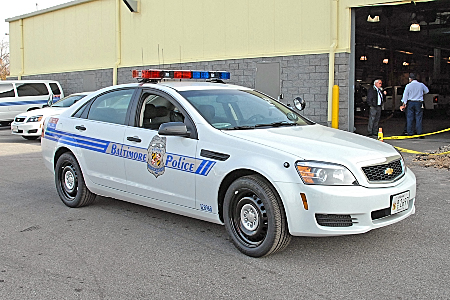 Courtesy of Jim Derreth
Courtesy of Jim Derreth
2012 BPD Chevy Caprice PPV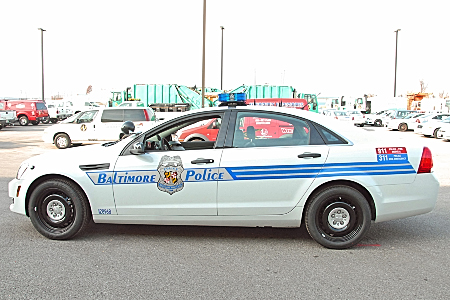 Courtesy of Jim Derreth
Courtesy of Jim Derreth
2012 BPD Chevy Caprice PPV
LIGHTS ON
History of Emergency Lights on Police Cars
Police cars began adding spotlights to the driver side or out of the roof of vehicles for extra visibility as soon as the electrical systems could handle them, but red and blue dome rooftop police lights didn’t become common until the mid-1930s.
The first police lights made from tail lights— which explains the red — they were mounted on the front fenders, or front bumpers, long before they went to the roof. Some cars had them in pairs, and others had an extra light mounted on the front right fender, facing rightward, that read “PULL OVER” or “STOP” when lit, which was used to stop speeding drivers.
The first 360° rotating “gumball” type light, called the “Beacon Ray”, was introduced by the Federal Sign and Signal Company in 1948. Red (and later blue) gumball lights remained popular through the late 1960s when they began to be replaced with horizontal “light bars” that included multiple rotating lights, mirrors to reflect their light forward or wherever else it was needed, and a siren.
STILL THE SAME
For all the changes that police cars have gone through in their first 100 years, one thing has not changed, at least not since that angry mob pushed the City of Akron’s custom-built electric police wagon into the river in 1900. Police cars have always been modified versions of standard automobiles, nothing more. Automakers didn’t even offer special law-enforcement upgrades (such as improved brakes, tires, steering, and suspension components) until Ford added them to its first “Police Package” cars in 1950. GM, Chrysler, and other major American automakers soon followed, and American police cars have been made that way ever since. So far, none of the Big 3 automakers have ever designed a “purpose-built” police car from scratch, because annual police car sales are too small to justify the expense.
![]()

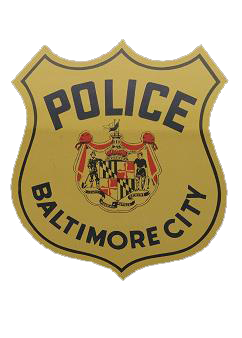
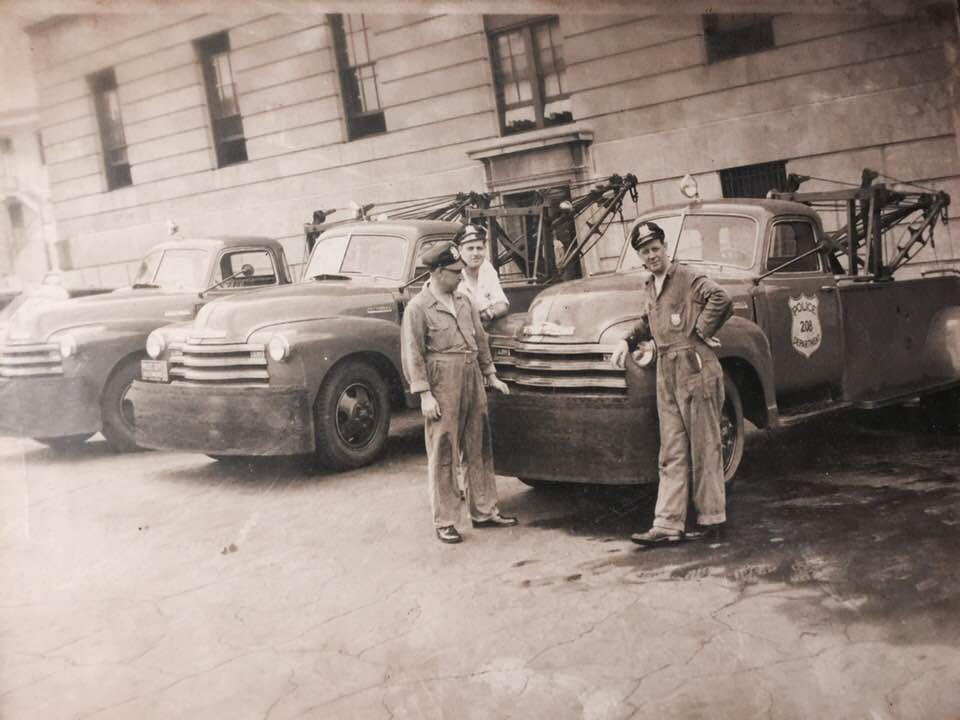
Courtesy John Heiderman
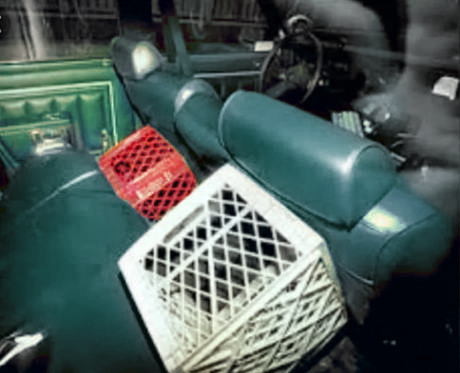
This is what the backseat of a 1980's BPD Patrol car looked
like after some big ole oversized policeman turned the front
bench seat into a reclining bench seat

COURTESY BALTIMORE POLICE DEPARTMENT
To visit a Bike Unit Page Click HERE or ether of the two Bike Unit Pics below 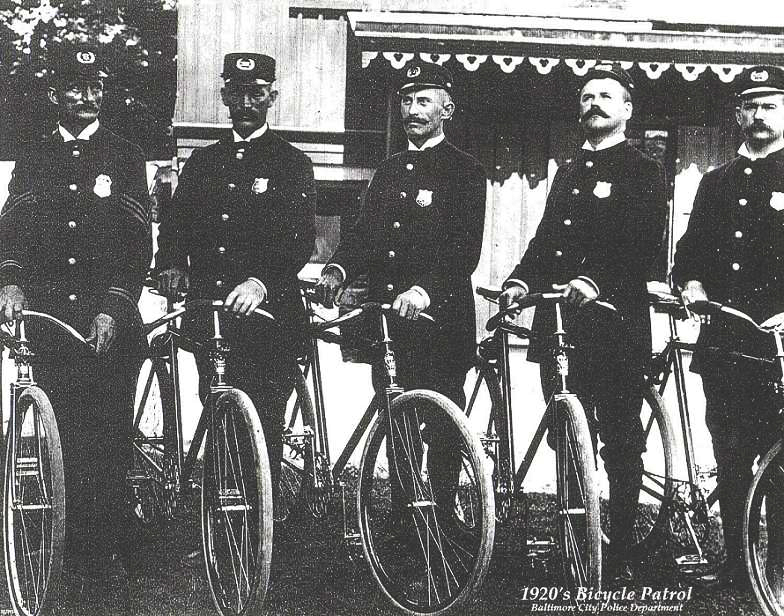
COURTESY SGT. ROBERT FISCHER 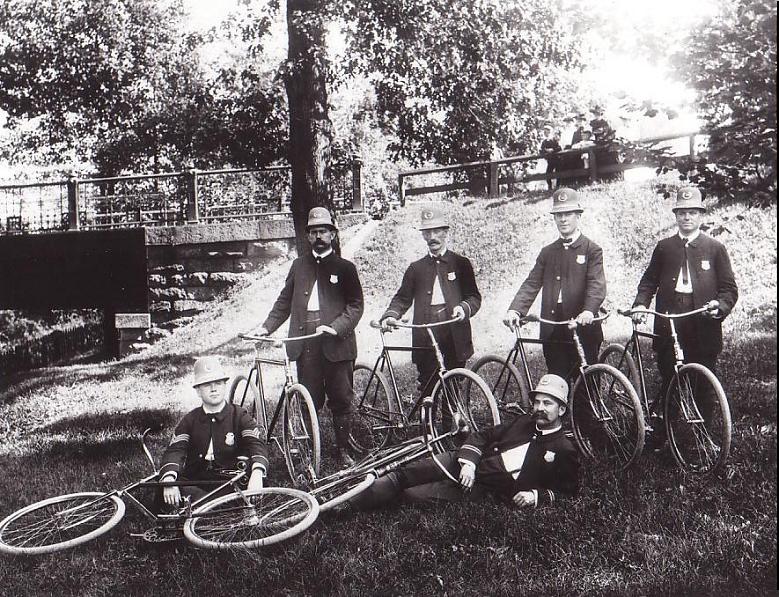 COURTESY SGT. ROBERT FISCHER
COURTESY SGT. ROBERT FISCHER

COURTESY SGT. ROBERT FISCHER
1920'S INDIAN MOTORCYCLE
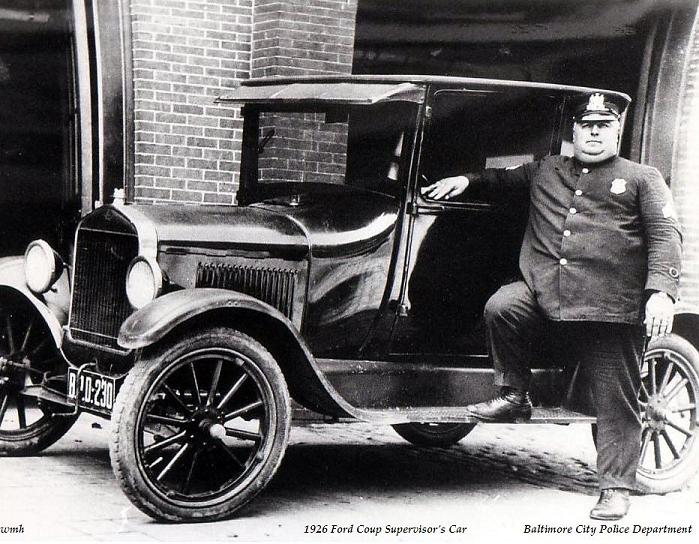
COURTESY SGT. ROBERT FISCHER
1926 FORD COUPE
SUPERVISOR'S CAR
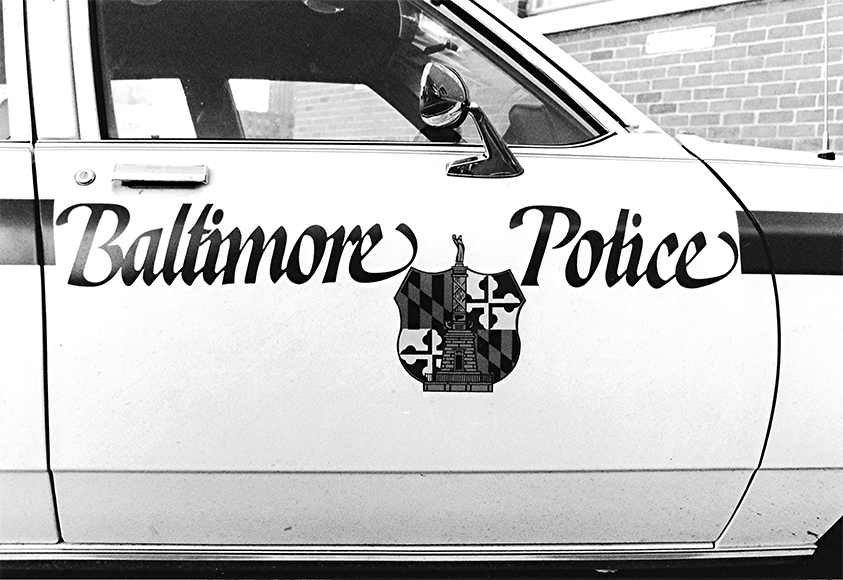 Courtesy Gary and Kath Lapchak
Courtesy Gary and Kath Lapchak
Car Logo - 1985
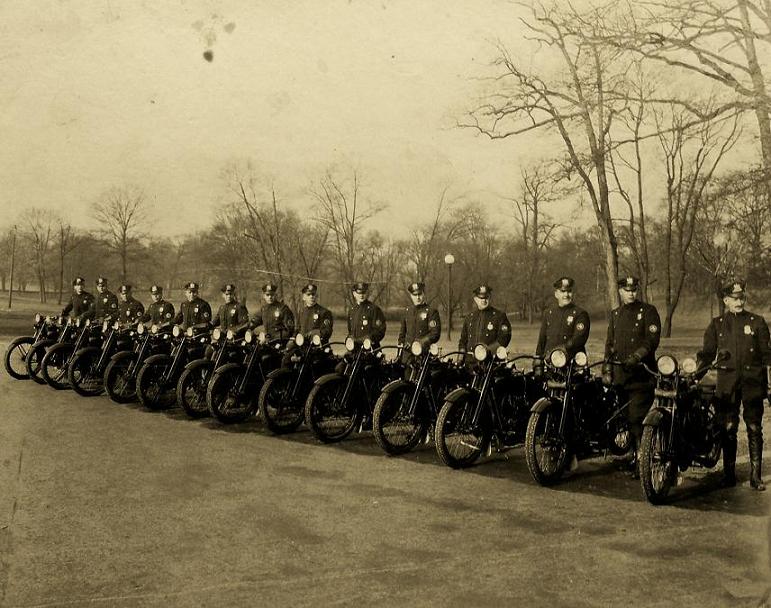
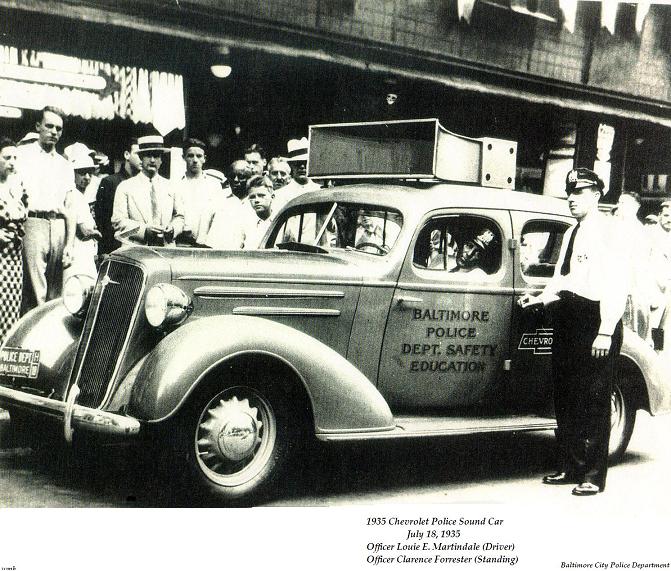
COURTESY SGT. ROBERT FISCHER
1935 CHEVROLET
SOUND CAR DEPT. SAFETY EDUCATION
OFFICER LOUIE MARTINDALE (DRIVER)
OFFICER CLARENCE FORRESTER (STANDING)

OFFICER WILLIAM HACKLEY PHOTOGRAPH
Officer Fred R. Fleischmann and Officer Joseph Hergat

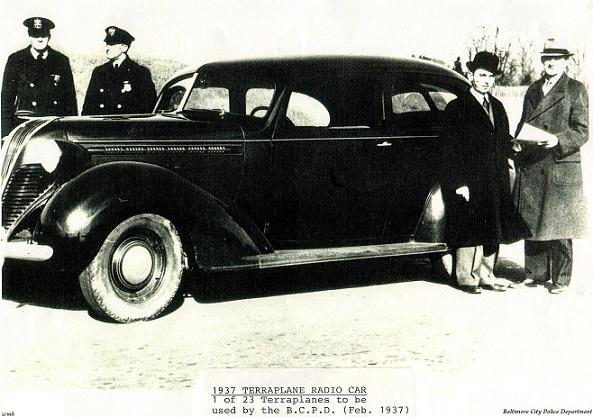
COURTESY SGT. ROBERT FISCHER
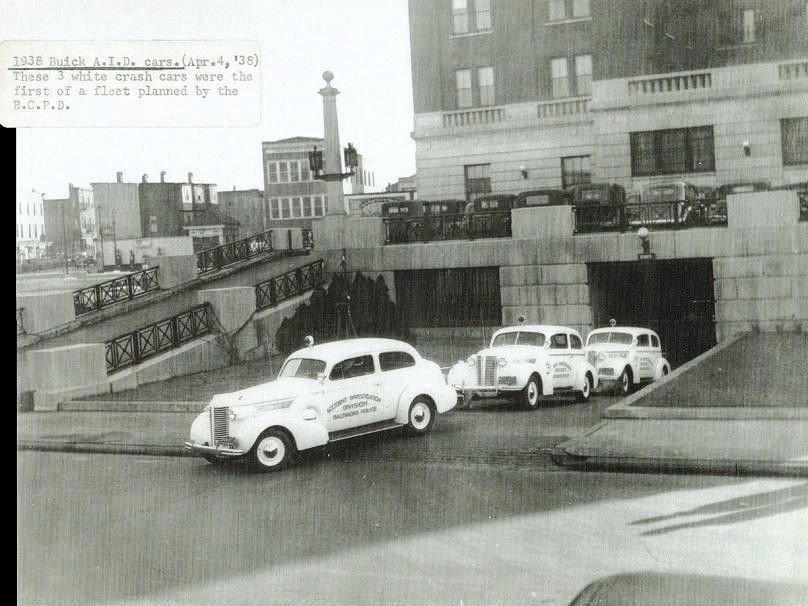
Photo courtesy Sergeant Robert Fisher

1940's Chevrolet A.I.D. Traffic car TC-3
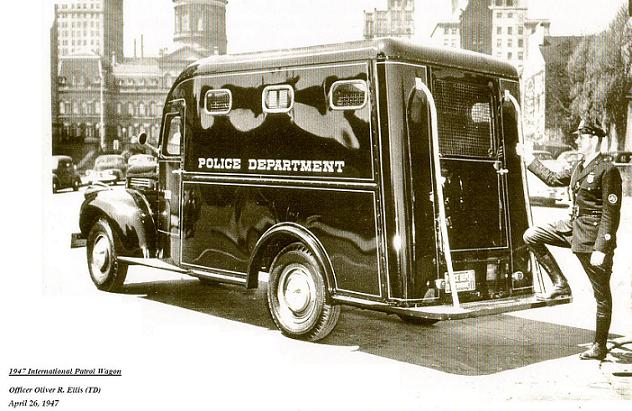
COURTESY SGT. ROBERT FISCHER
1947 International Patrol Wagon
Officer Oliver R.Ellis, Traffic Division
April 26, 1947

1940's BPD Tow Truck
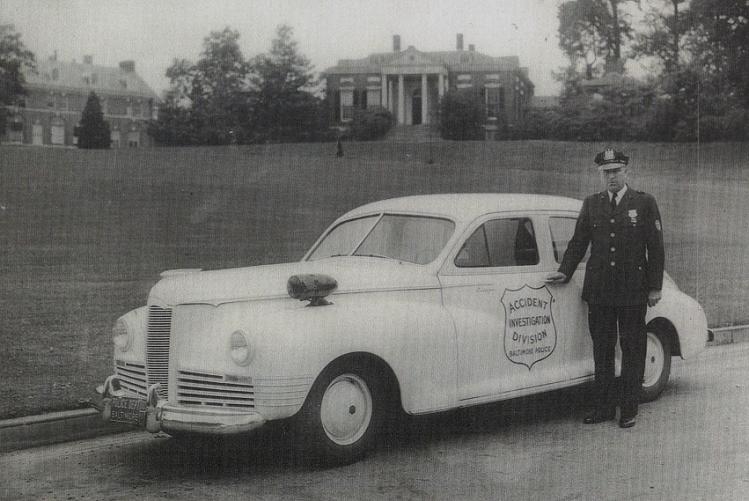
Photo courtesy Sergeant Robert Fisher
1942 Packard A.I.D. Off. U.B. Huff
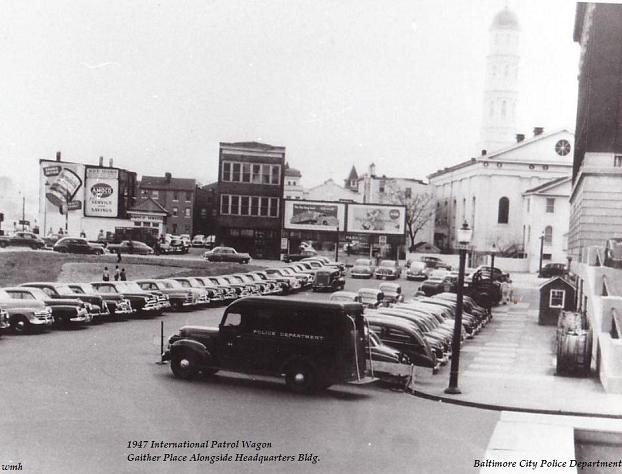
COURTESY SGT. ROBERT FISCHER
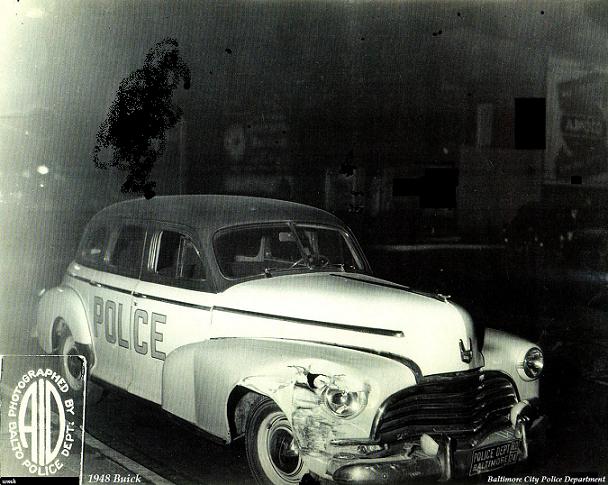
COURTESY SGT. ROBERT FISCHER
1946 Chevrolet FleetMaster Town Sedan
UNUSUAL LETTERING AND 2 TONE PAINT SCHEME
1948 Buick as listed on this photo is wrong

Police Cars Marked
19 July 1944
Baltimore Police radio cars are being required to surrender their anonymity by having the word “POLICE” painted on their sides in conspicuous lettering, commissioner Hamilton R Atkinson announced today 19 July 1944. The radio cars of Central and eastern districts appeared today with identifying lettering on their sides, and the cars in the other districts will be similarly equipped in the next few days, the commissioner said. Having no standard color and no lettering on their bodies, the radio cars heretofore could not be identified, except by their small license plates. Accordingly, Commissioner Atkinson said, numerous complaints were made by citizens, particularly in outlying districts, who said they never saw a police car in their neighborhoods. The foot-high letters on the cars will remedy that situation, he said.
![]()
19 July 1944
Radio Cars are Marked for the First Time
Radio cars are marked for the first time departmental history. The Commissioner at the time Hamilton Atkinson said the cars could not be missed as they will have 12" letters running down both sides of the cars that simply reads "POLICE" NOTE - Accident investigation vehicles were marked prior to the 1944 radio cars
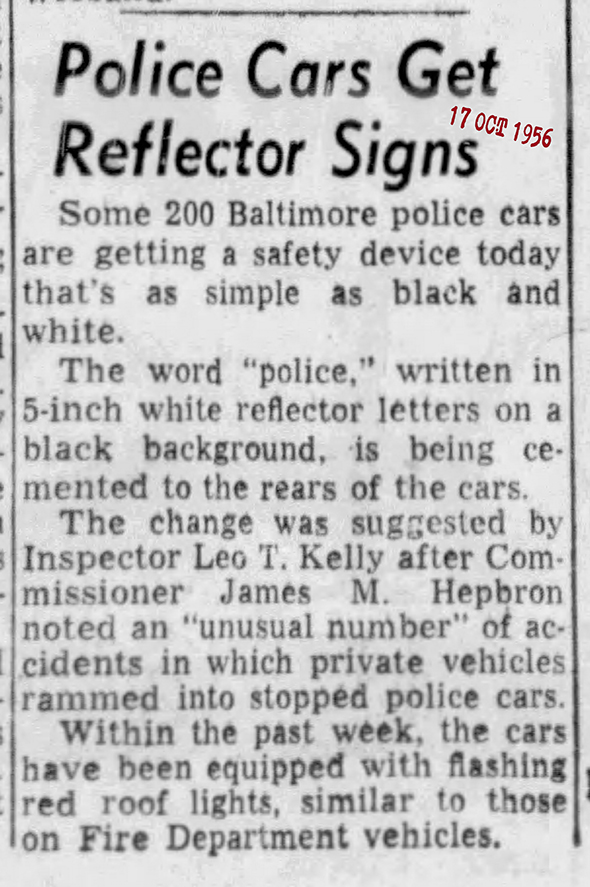
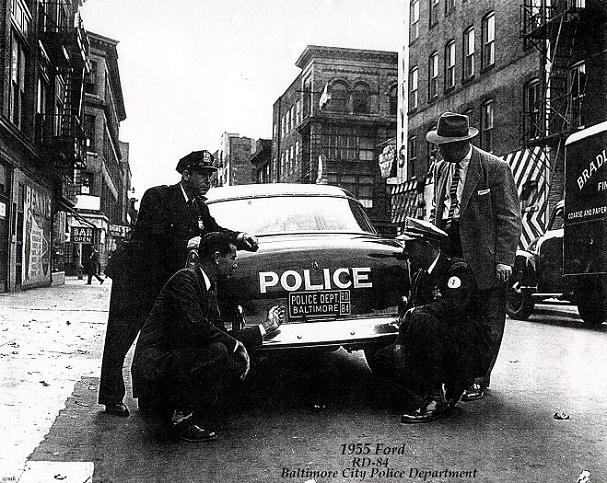
SHANNON BAUM PHOTOGRAPH
1956 Ford, man kneeling on left is the owner of Shannon Baum, maker of the decals for the department,
1956 Ford, man kneeling on left is the owner of Shannon Baum, maker of the decals for the department,
checking out the POLICE decal on the rear of the car.
They also added the flashing red light to the roof for the first time in Baltimore.
1955 Ford Pic taken in 1956They also added the flashing red light to the roof for the first time in Baltimore.
when POLICE was added to the back
of our Patrol Cars
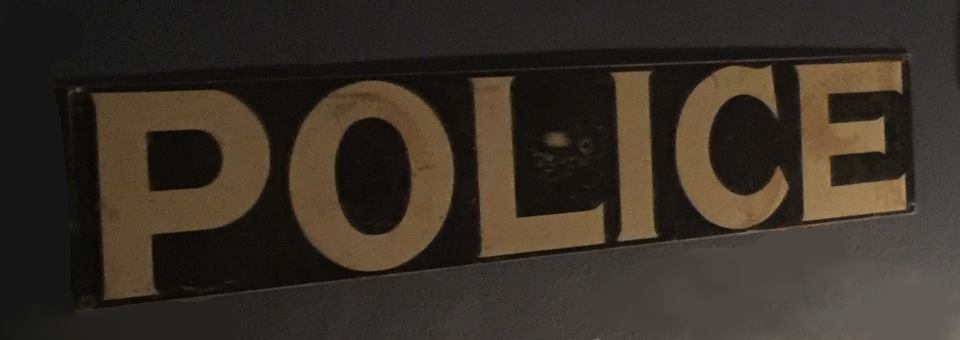 Courtesy Johnny Heiderman
Courtesy Johnny Heidermanan Example of the Rear Panel of the Patrol Car
POLICE Reflective Letters
17 October 1956
Police Cars Get Reflector Signs
Some 200 Baltimore police cars are getting a safety device added today [17 October 1956]
That’s as simple as black and white.
The word “POLICE,” written in 5-inch white reflective letters on a black background, is being cemented to the rear of the cars. The change was suggested by inspector Leo T. Kelly after Commissioner James M. Hepbron noted an “unusual number” of accidents in which private vehicles rammed into the rear of stopped police vehicles. Within the past week, the cars have also been equipped with flashing red roof lights, similar to those used on Fire Department vehicles.
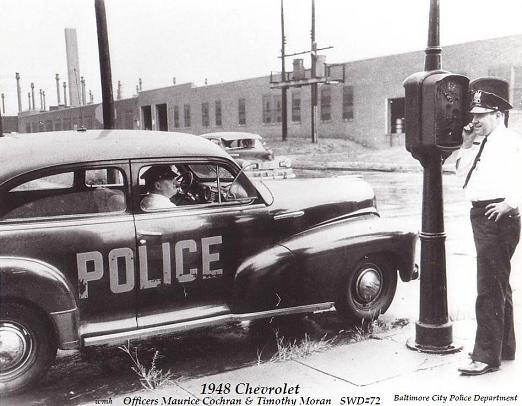
COURTESY SGT. ROBERT FISCHER
Officer Maurice Cochran and Timothy Moran, Southwest District 72

OFFICER WILLIAM HACKLEY
Officer Wilbert Sudmeier (center)
1948 GREY CHEVROLET
LARGE 12 INCH RED LETTERS
POLICE
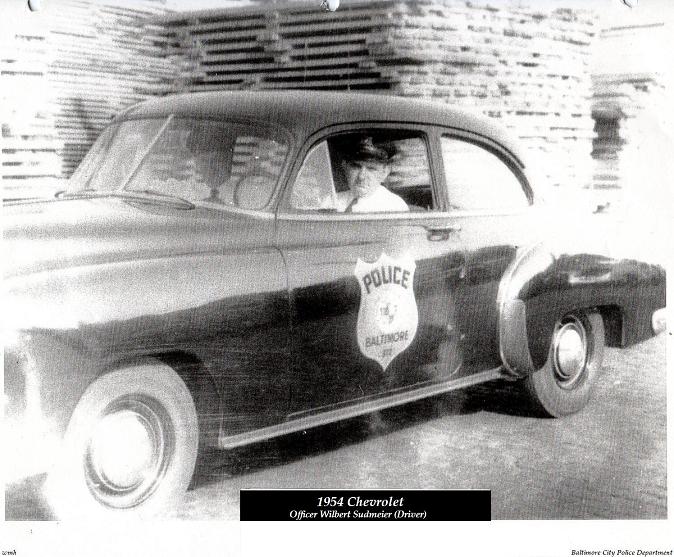
1954 CHEVROLET
OFFICER WILBERT SUDMEIER (DRIVER)

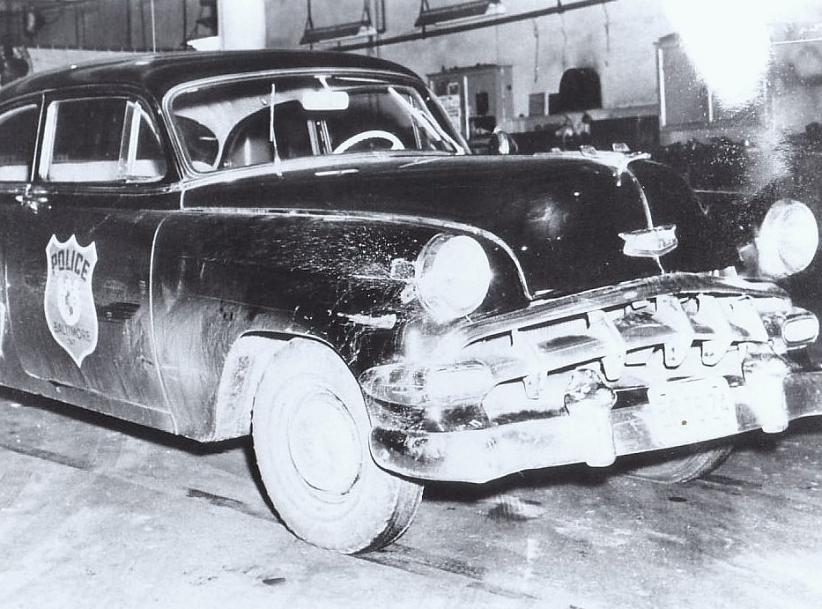
Photo courtesy Sergeant Robert Fisher
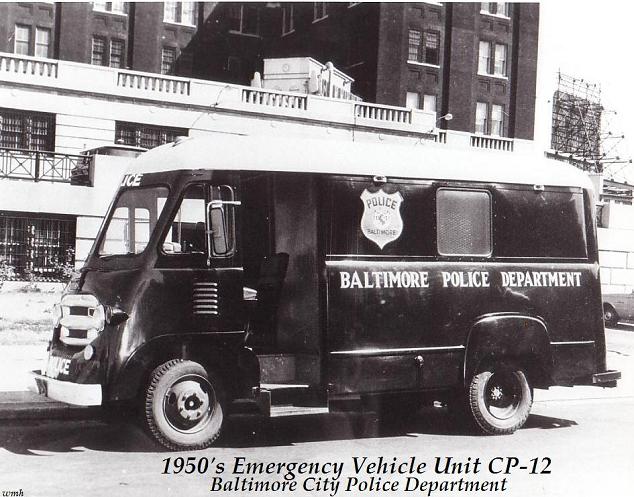
COURTESY SGT. ROBERT FISCHER
1950'S EMERGENCY VEHICLE UNIT (EVU)
TACTICAL UNIT CP-12

COURTESY SGT. ROBERT FISCHER
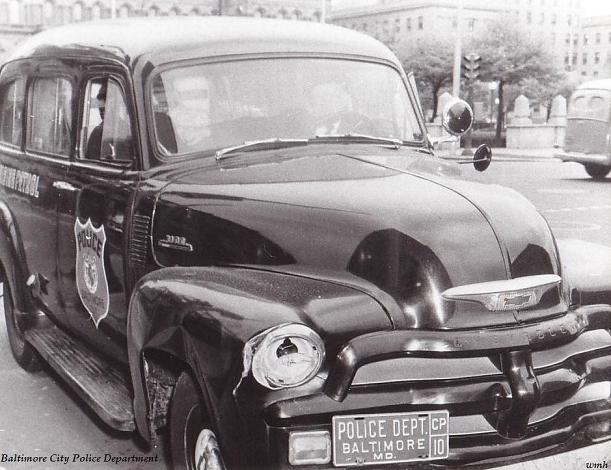
COURTESY SGT. ROBERT FISCHER
1950'S CHEVROLET
PATROL WAGON CP-10

COURTESY SGT. ROBERT FISCHER

COURTESY SGT. ROBERT FISCHER

1950's Chevrolet Sedan Accident Investigation car
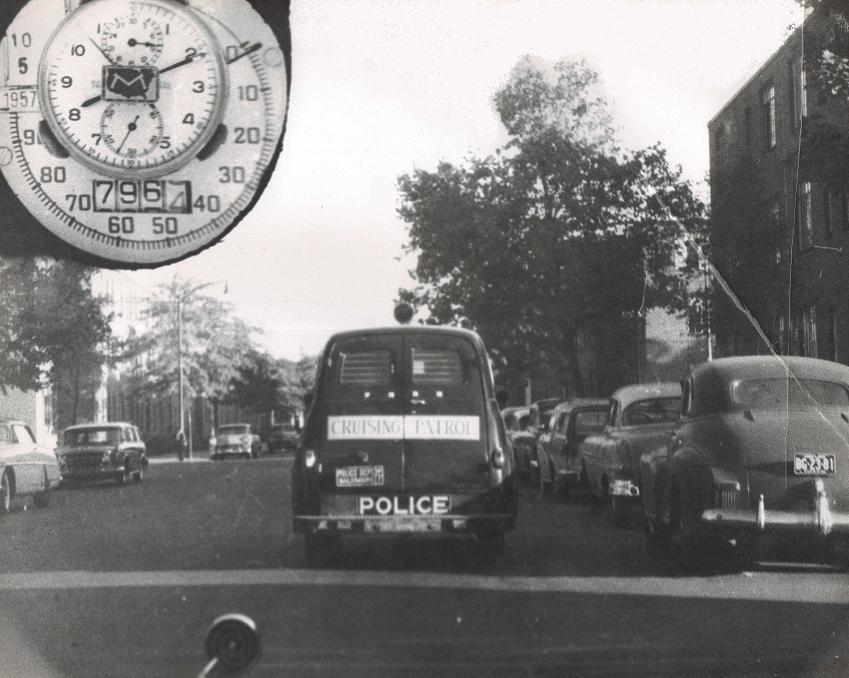

COURTESY SGT. ROBERT FISCHER
1955 Ford pic taken in 1956 as is evident from the red flashing roof light.
This light was first added by Inspector Kelly when he added the word POLICE
to the rear of patrol cars in an effort to stop cars from being rear-ended.
1955 Ford pic taken in 1956 as is evident from the red flashing roof light.
This light was first added by Inspector Kelly when he added the word POLICE
to the rear of patrol cars in an effort to stop cars from being rear-ended.

1955 FORD
SAFETY PATROL CAR
See remarks above regarding red light and rear markings
See remarks above regarding red light and rear markings

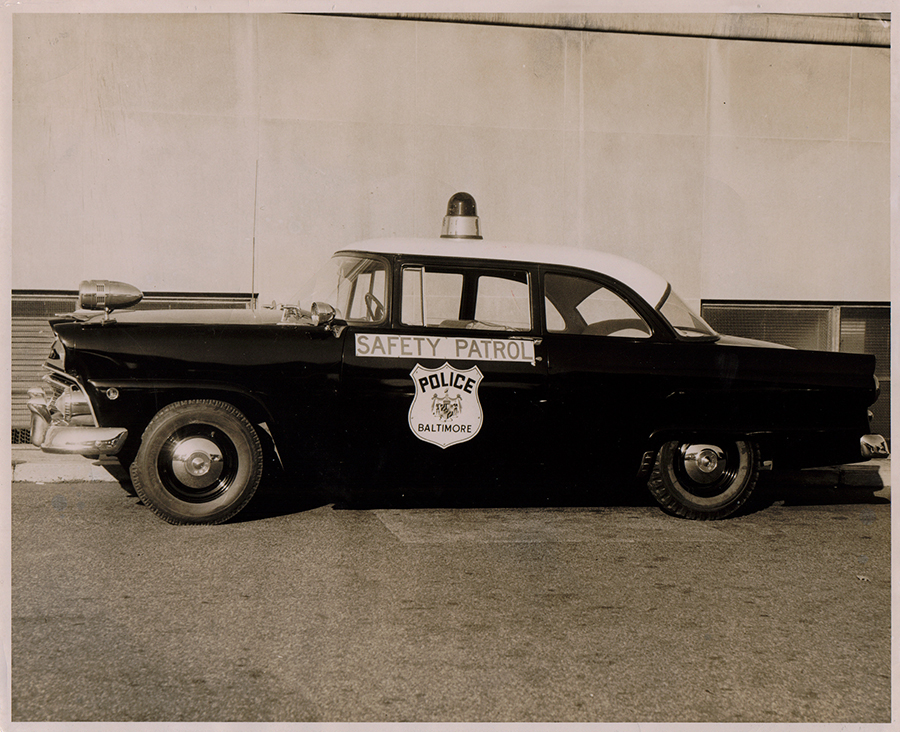 Sun paper pic
Sun paper pic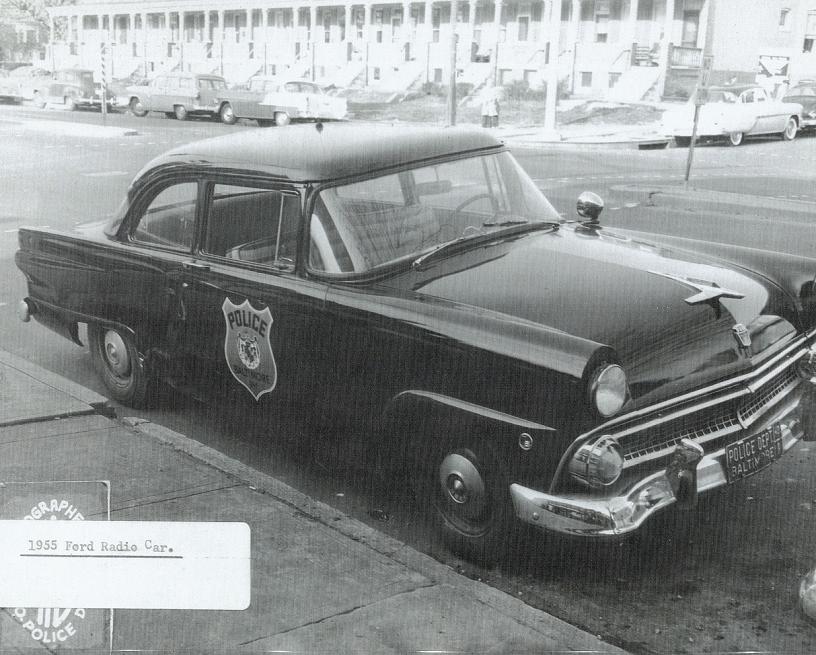
COURTESY SGT. ROBERT FISCHER

1955-1956 Ford K-9 cars (above)
1957 Ford Safety Patrol Unit (below)
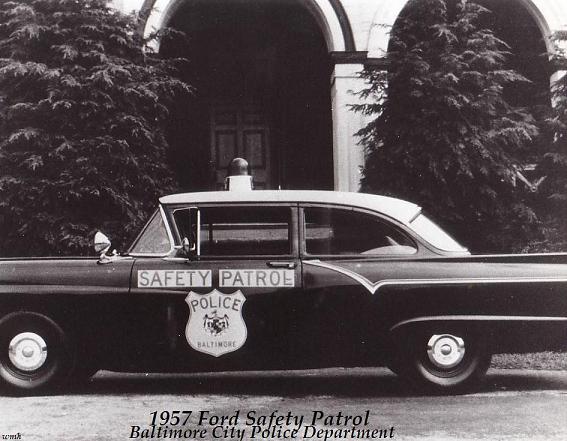
COURTESY SGT. ROBERT FISCHER
1957 FORD
SAFETY PATROL CAR
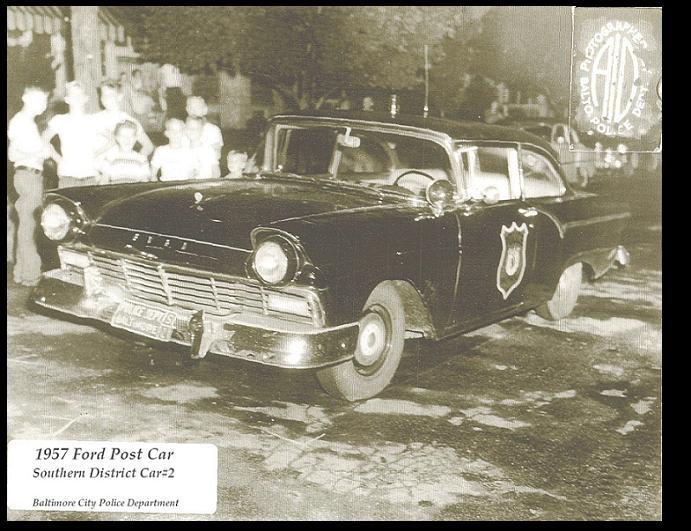
COURTESY SERGEANT ROBERT FISCHER
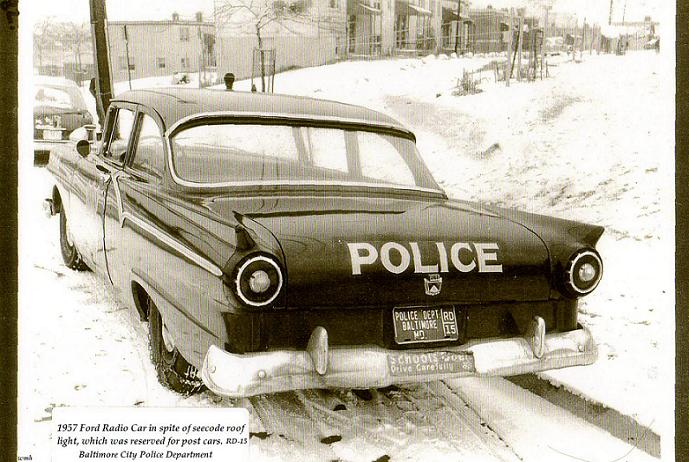
COURTESY SGT. ROBERT FISCHER
This is word POLICE first added to the back of the car in 1956
This is word POLICE first added to the back of the car in 1956
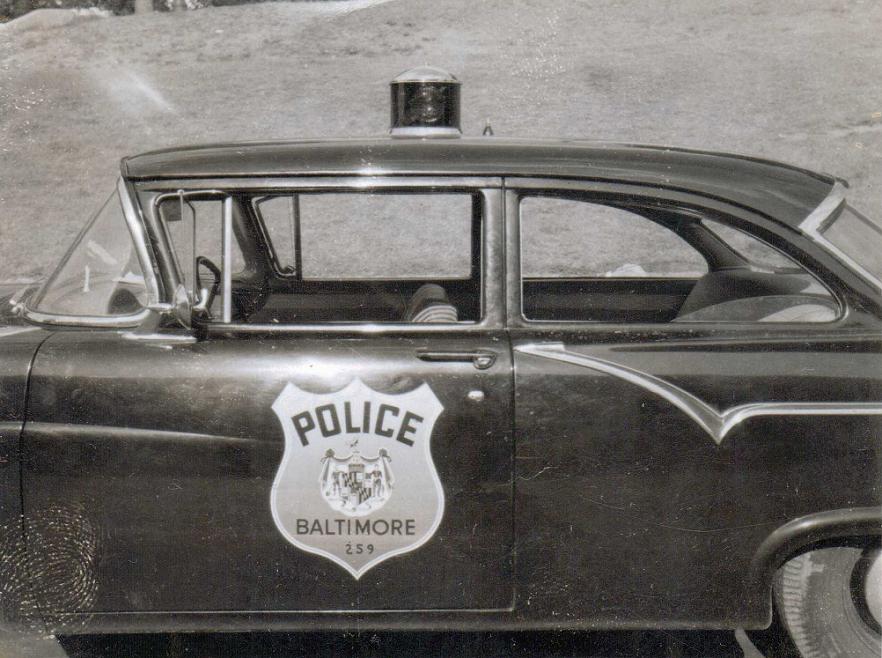
1957 FORD
Showing the side door markings
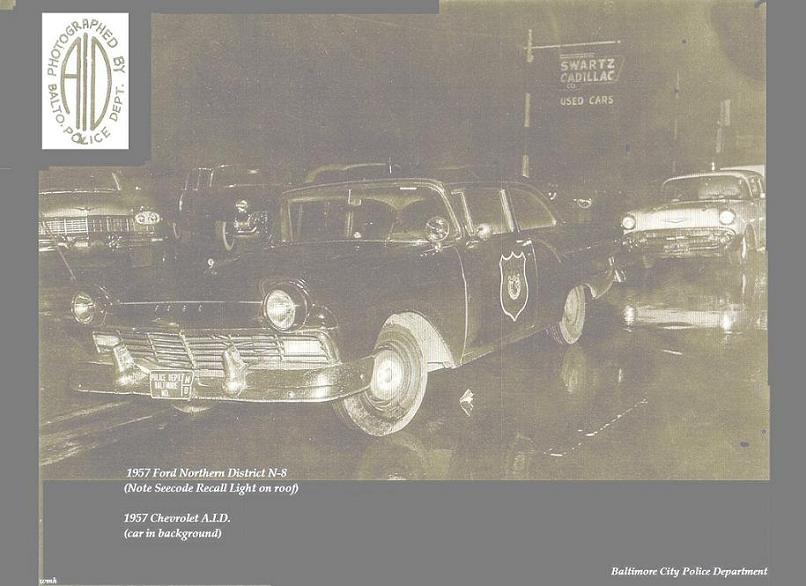

1957 CHEVROLET A.I.D.
Accident Investigation Division

COURTESY SGT. ROBERT FISCHER
1958 FORD
K-9 CARS
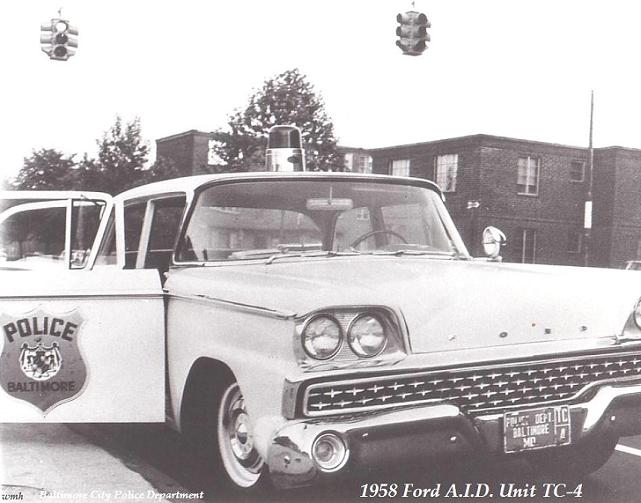
COURTESY SGT. ROBERT FISCHER
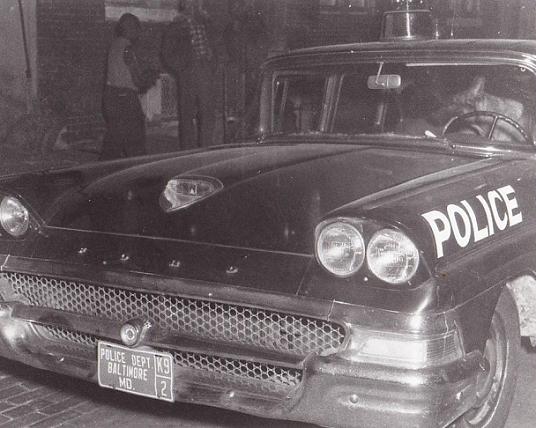
COURTESY SGT. ROBERT FISCHER
1958 FORD
K9 UNIT
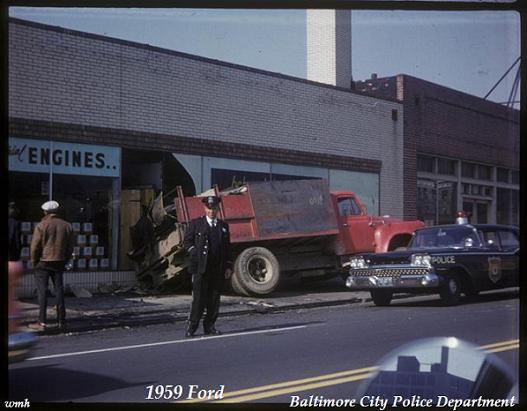
1959 Ford at the scene of an accident
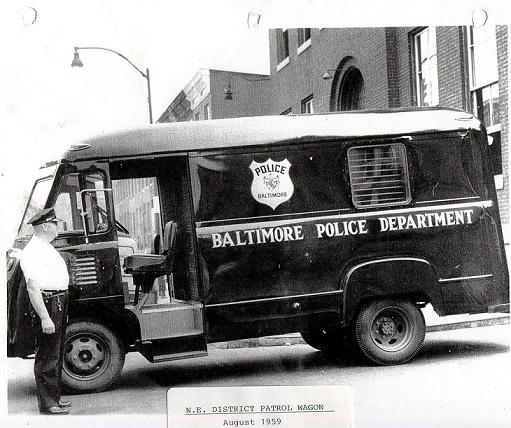
COURTESY SGT. ROBERT FISCHER
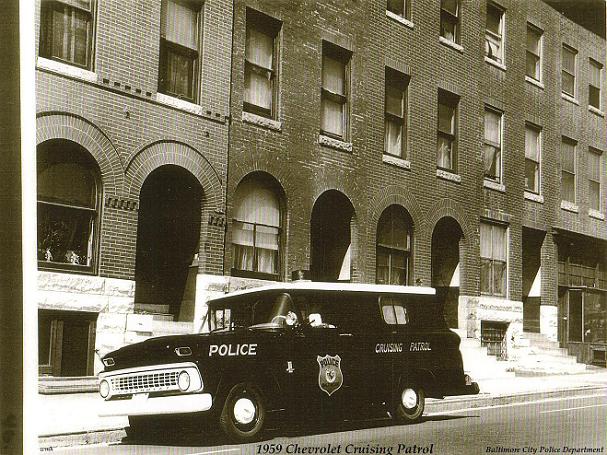
COURTESY SGT. ROBERT FISCHER
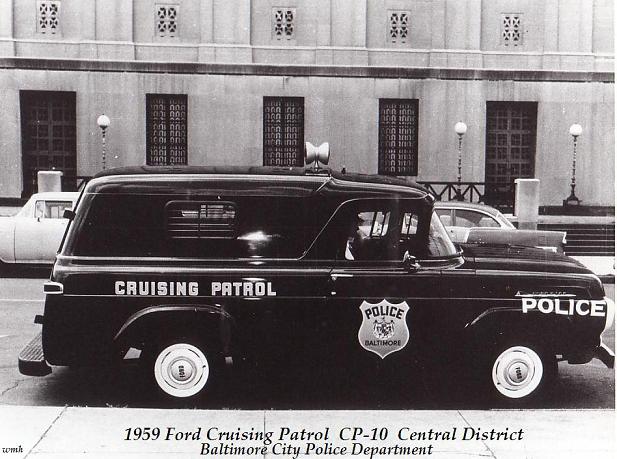
COURTESY SGT. ROBERT FISCHER
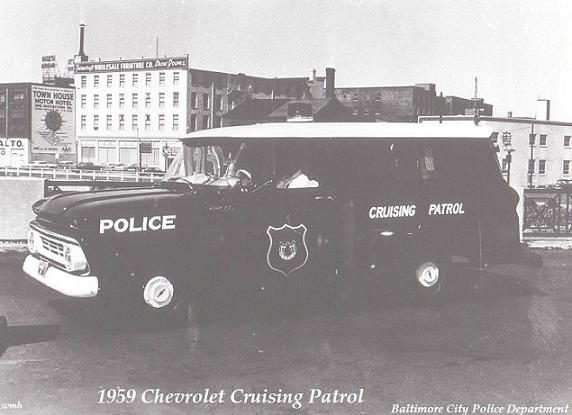
COURTESY SGT. ROBERT FISCHER
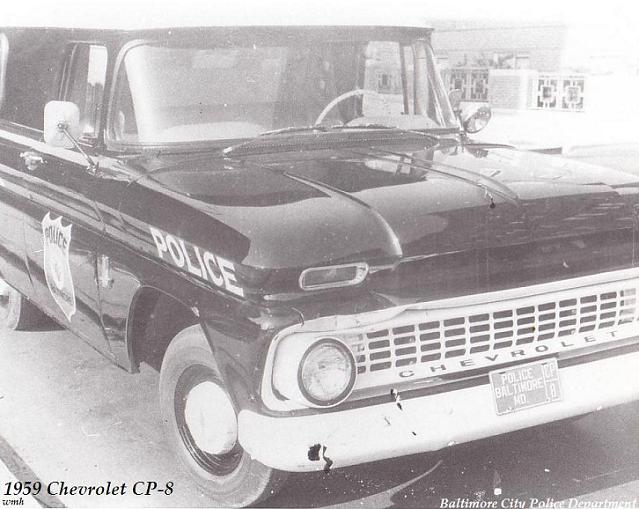
COURTESY SGT. ROBERT FISCHER

COURTESY SGT. ROBERT FISCHER

COURTESY SGT. ROBERT FISCHER

COURTESY SGT. ROBERT FISCHER
1960'S JEEP
NORTHERN DISTRICT N-29
DRUID HILL PARK OR LAKE ROLAND PATROL VEHICLE
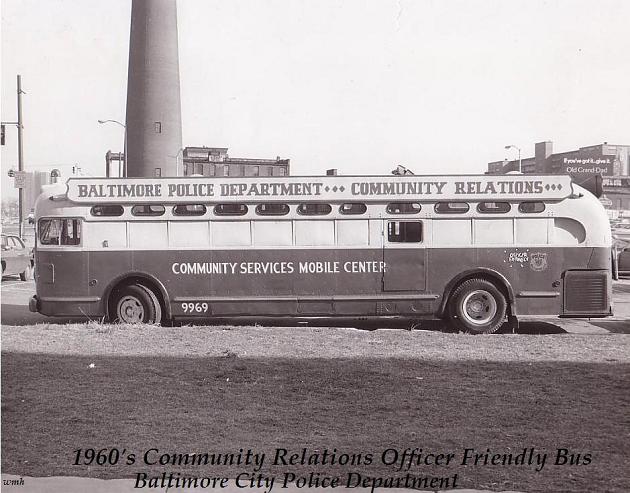
1960'S BUS
COMMUNITY RELATIONS
OFFICER FRIENDLY
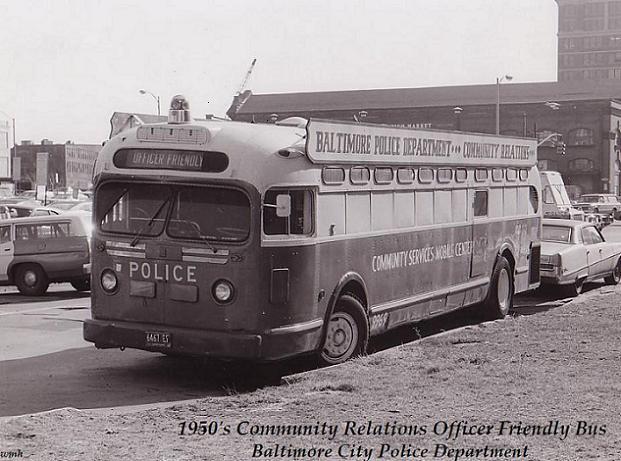

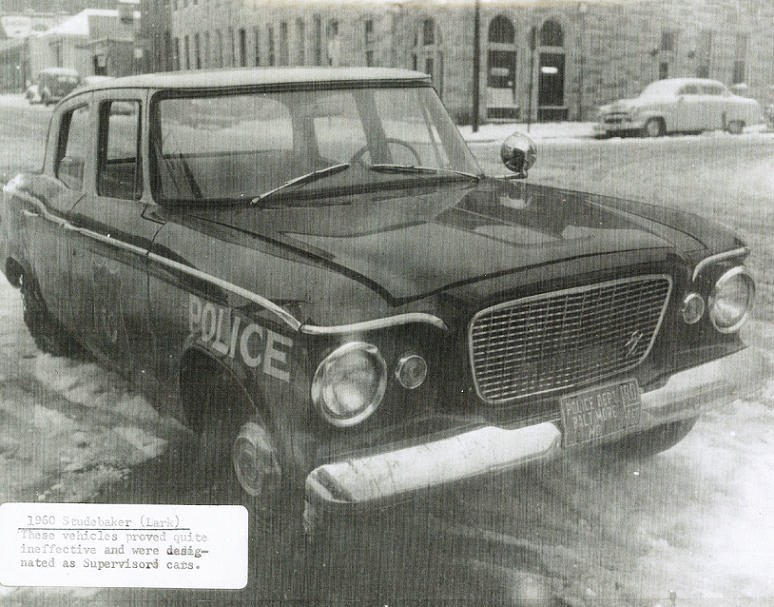
Photo courtesy Sergeant Robert Fisher

COURTESY SGT. ROBERT FISCHER
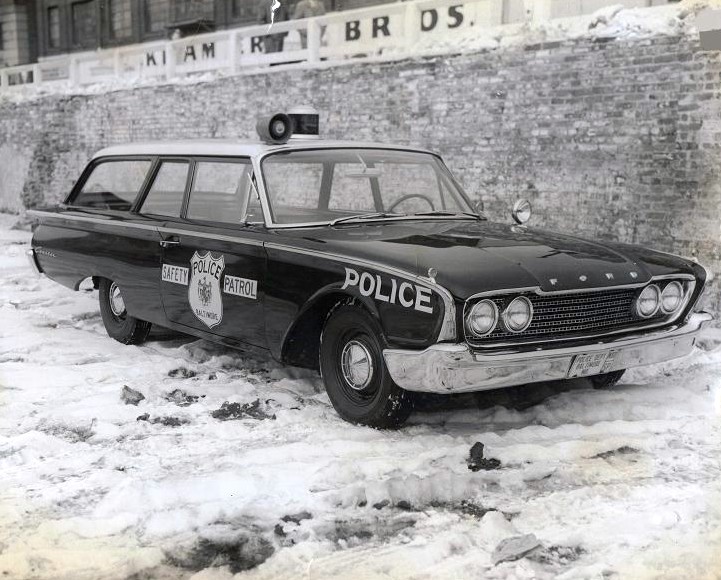
1960 FORD
SAFETY PATROL CAR
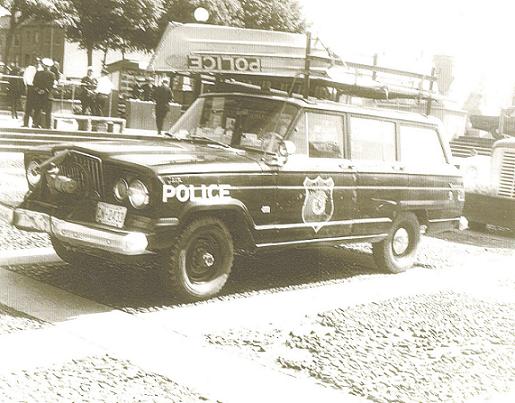
COURTESY SGT. ROBERT FISCHER
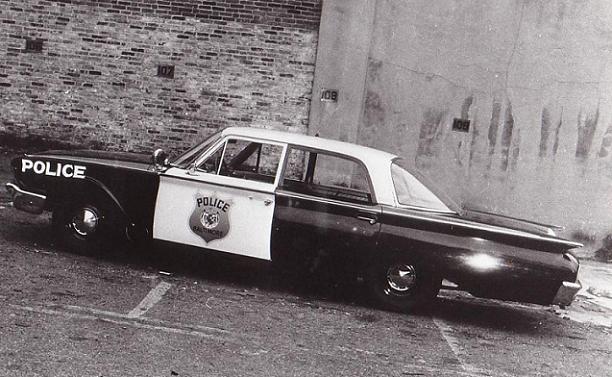
COURTESY SGT. ROBERT FISCHER
Above 1960 FORD patrol car, testing a new paint scheme. Black with front doors and roof WHITE,
Below, 1960 Ford patrol car testing a new paint scheme. Black with both doors and roof WHITE.
Neither design was adopted.
All Black with a White roof was selected.
All Black with a White roof was selected.
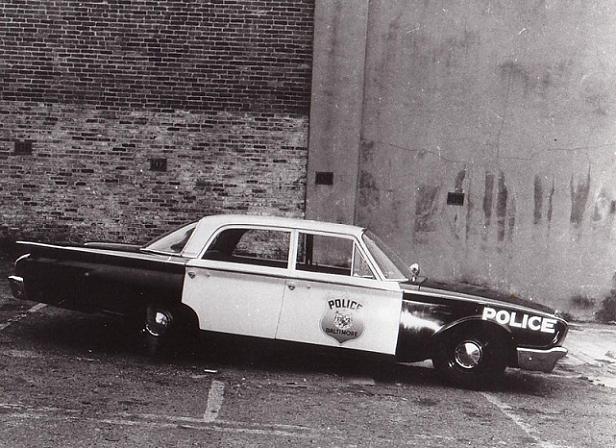
COURTESY SGT. ROBERT FISCHER

COURTESY SGT. ROBERT FISCHER
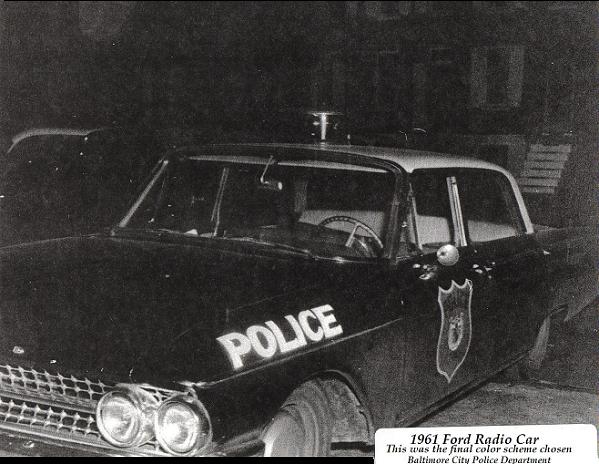
COURTESY SGT. ROBERT FISCHER
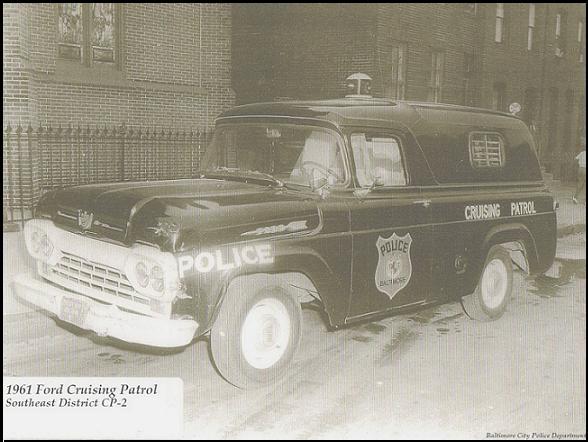
COURTESY SGT. ROBERT FISCHER
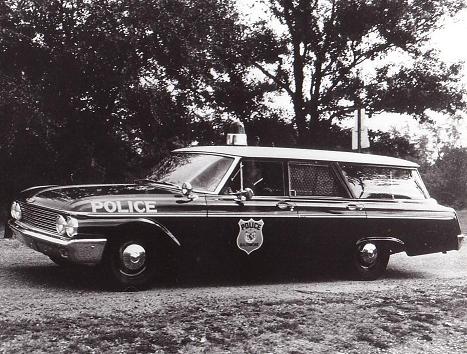
COURTESY SGT. ROBERT FISCHER
1962 Ford K-9 wagon
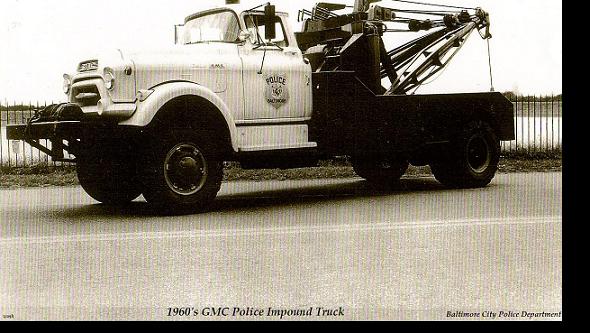
COURTESY SGT. ROBERT FISCHER

COURTESY SGT. ROBERT FISCHER

Courtesy Mark Lindsay
The first CP-11 and CP-12 trucks were donated to the Department from a Baltimore Bread Company.
Here one of the trucks: late 60's. At the Fallsway parking lot behind the old HQ Bldg.
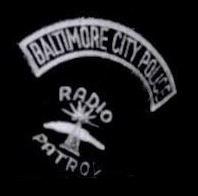

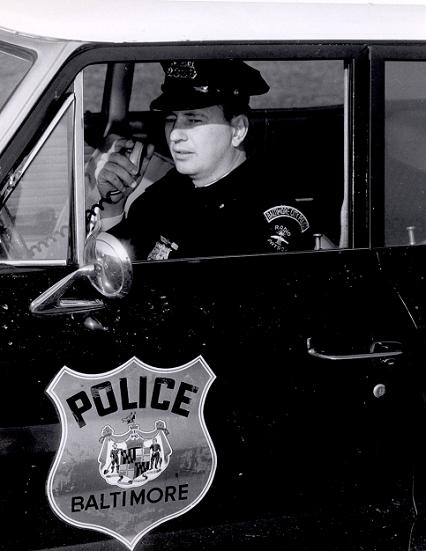
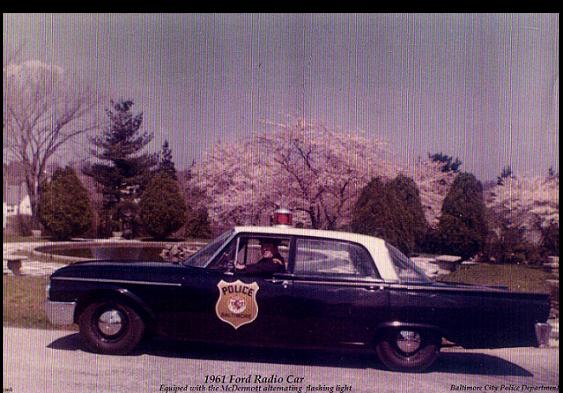
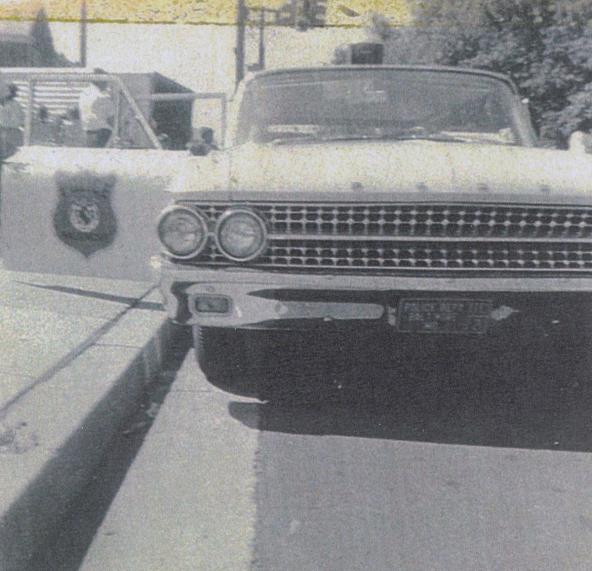
Photo courtesy Sgt. Robert Fisher
1961 Ford A.I.D. unit TC-2
Accident Investigation Division
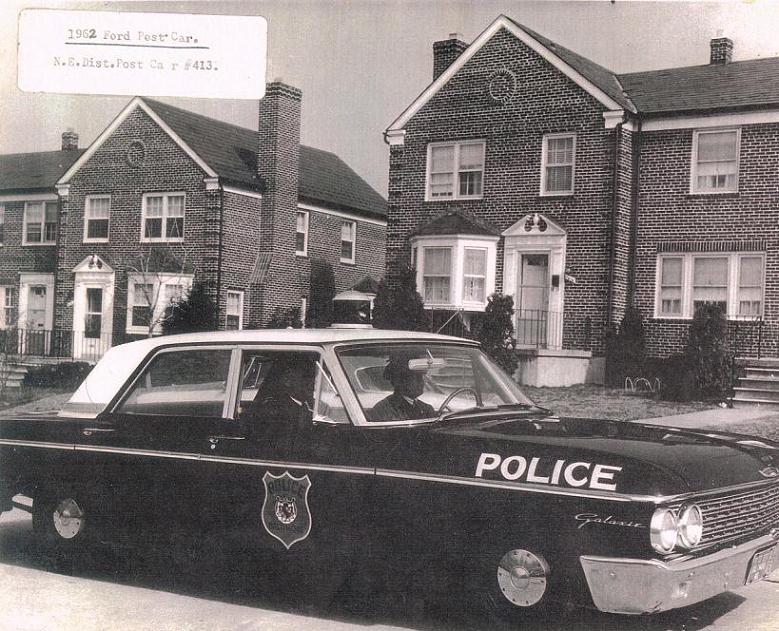
Photo courtesy Sgt. Robert Fisher
1962 Ford sedan NED post car #413

1963 Ford Sedan

1963 Plymouth Traffic Car
In 1963 the department used both Ford and Plymouth in the fleet. The Plymouth was used for Traffic

COURTESY SGT. ROBERT FISCHER
1964 FORD BLACK & WHITE PATROL CAR WITH THE McDermott FLASHING LIGHT.
1964 DODGE TRAFFIC UNIT (AID) ACCIDENT INVESTIGATION DIVISION. WHITE CAR WITH BLACK HOOD AND AA REVOLVING ROOF LIGHT
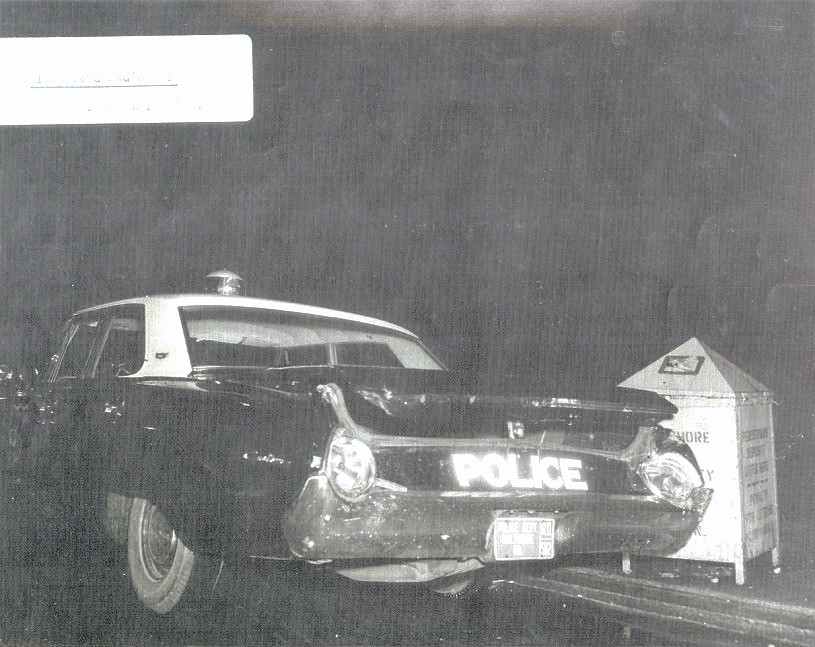
1964 Ford ND 502 car

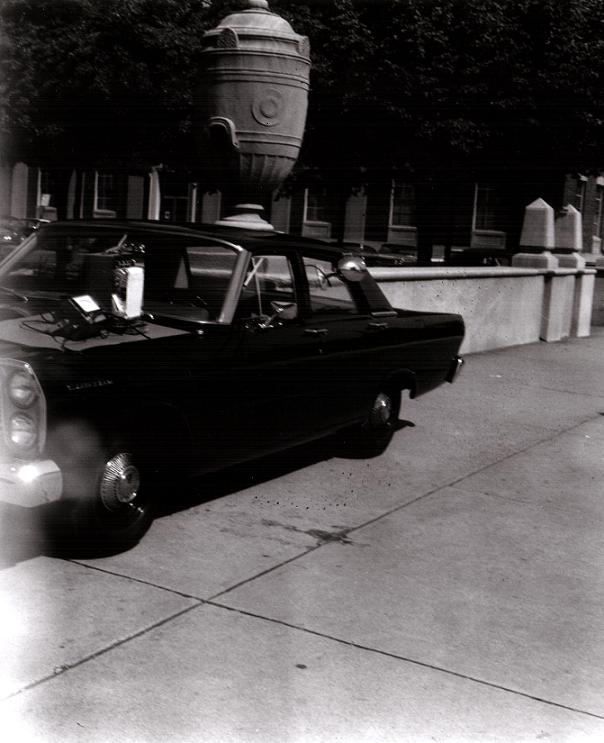
1965 Ford unmarked Traffic RADAR car

COURTESY SGT. ROBERT FISCHER
1966 Ford, testing a new paint scheme. Northern District Car N-521
The new colors were BLUE & WHITE.
The color scheme was adopted in 1967 with the new fleet of Chevrolet vehicles.
Blue body with both doors and the roof WHITE
NOTICE: the District Commander above the door emblem, this was also adopted in 1967 for the Captain of the District
This color scheme was adopted by Police Commissioner Pomerleau, who had come from Florida where this color scheme was used. Also used in Hawaii.
Bottom photo, the adopted version was for the trunk lid to be BLUE.
NOTICE: the small light on the roof behind the bacon, RECALL LIGHT.
When the officer was out on Foot Patrol, if he was needed for a call for service, the roof light could be activated from headquarters to notify the officer.
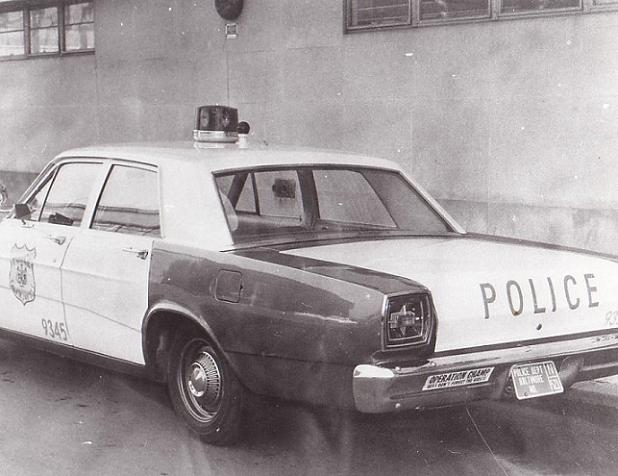
COURTESY SGT. ROBERT FISCHER
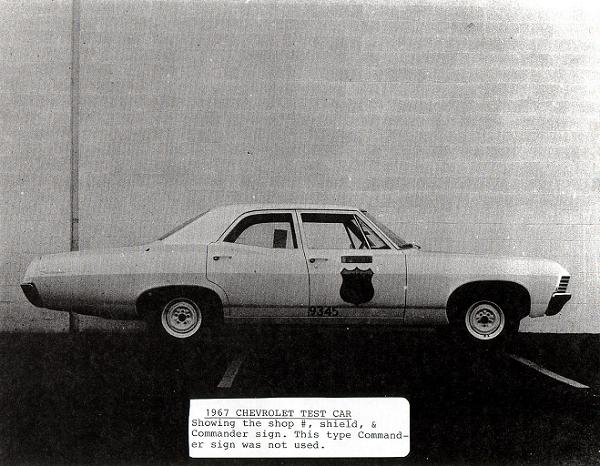
COURTESY SGT. ROBERT FISCHER

Sunpaper photographer William L LaForce
Date 2 Oct 67 - Police Department Baltimore Patrol Cars 1967
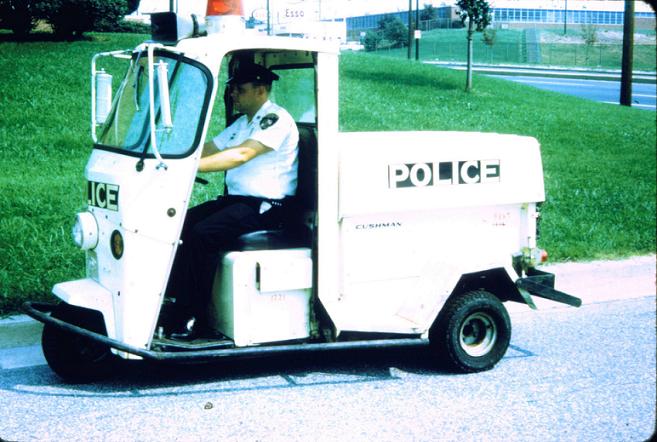
CUSHMAN SCOOTER USED TO PATROL SHOPPING CENTERS AS A MOTORIZED FOOT PATROL
![]()
The Following 4 Pics came to us Courtesy of retired Lieutenant Robert Wilson


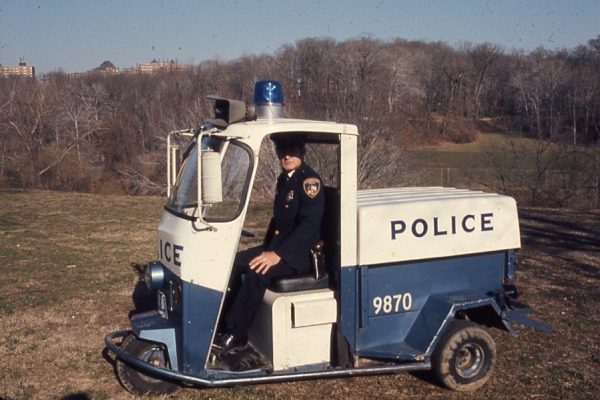
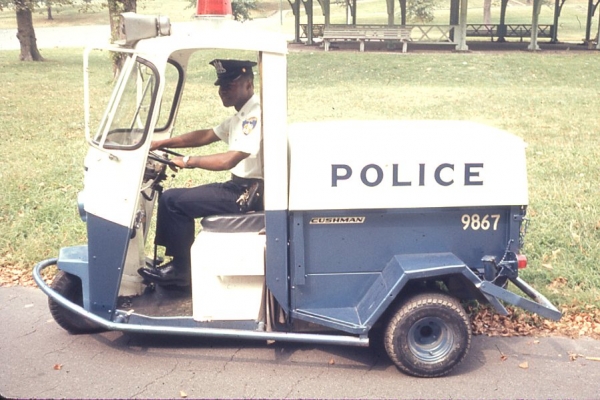
![]()
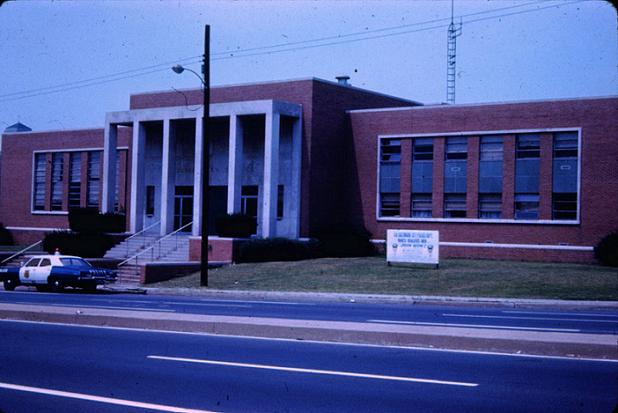
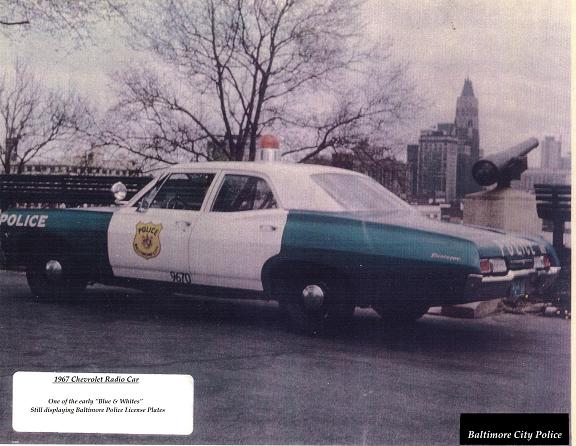
COURTESY SGT. ROBERT FISCHER
1967 CHEVROLET
ONE OF THE FIRST OF THE BLUE & WHITE COLOR SCHEME
HAS THE OLD BPD LICENSE PLATES
SHOP# 9670

COURTESY SGT. ROBERT FISCHER
1967 CHEVROLET
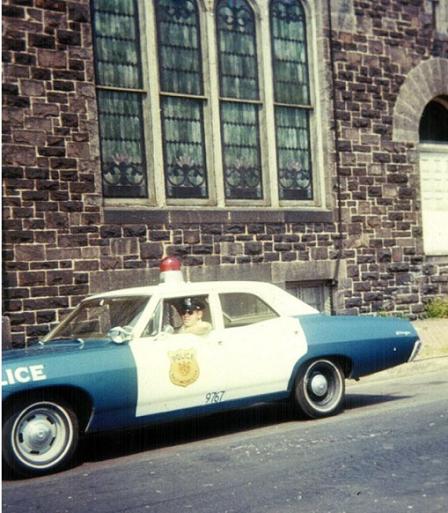
COURTESY JULES DENITO
1967 Chevrolet
Officer Jules Denito Southern District
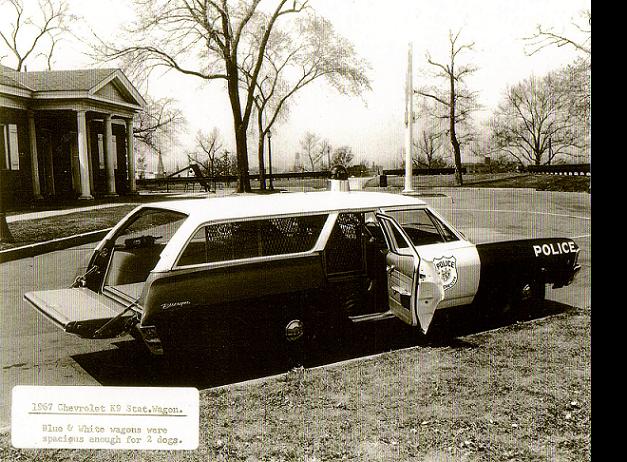
COURTESY SGT. ROBERT FISCHER

COURTESY SGT. ROBERT FISCHER
1968 International Park Patrol Vehicle
Assigned Northern District
Druid Hill Park & The Baltimore Zoo
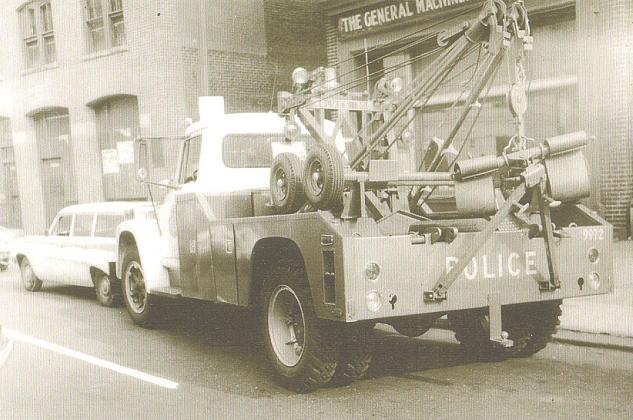
COURTESY SGT. ROBERT FISCHER
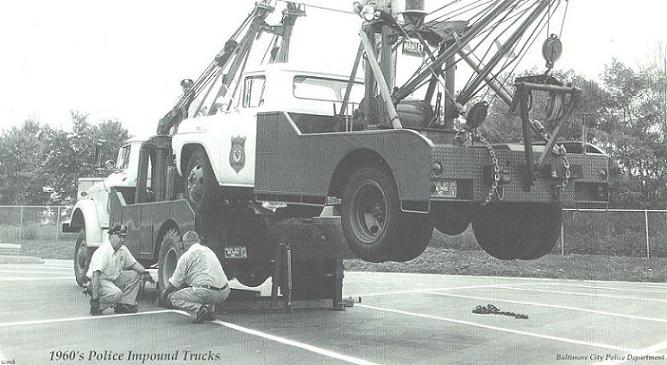
COURTESY SGT. ROBERT FISCHER

1967 FORD FALCON METER MAID CAR

1968 Chevrolet Southern District Unit, parked in the 1200 blk. of Marshall St., north of Osten St.
"ON FOOT PATROL" flasher light on the roof used by the motorized foot officer.
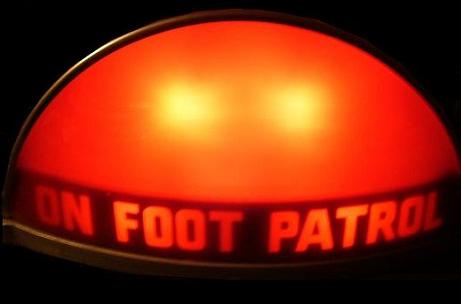
Courtesy Officer John Brazil

Photo courtesy Sergeant Robert Fisher

COURTESY SGT. ROBERT FISCHER
1969 Ford
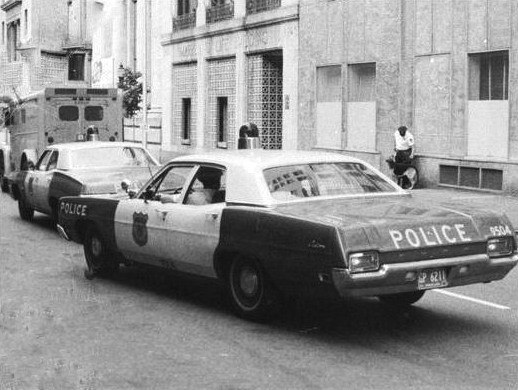
1968 Chevrolet Biscayne and 1970 Ford Custom
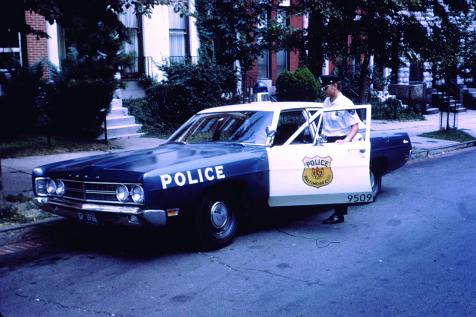 1970 FORD
1970 FORD
SHOP# 9509
NOTE THE CHANGE OVER TO BLUE ROOF LIGHTS
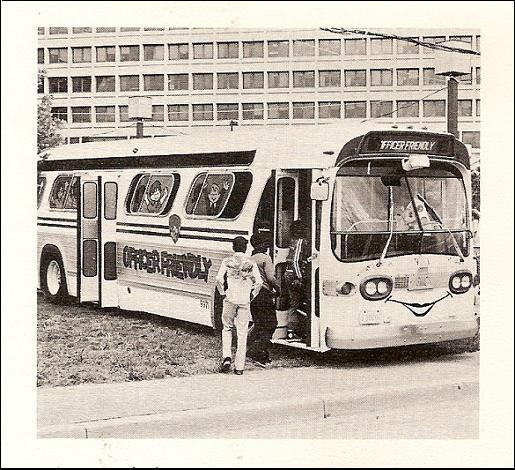
Photo courtesy Bill Manzke
Baltimore City Police Community Relations "Officer Friendly Bus" An old used MTA bus given to the BPD and converted into a police vehicle by painting it with the new blue and white color scheme as used on the current fleet of vehicles.
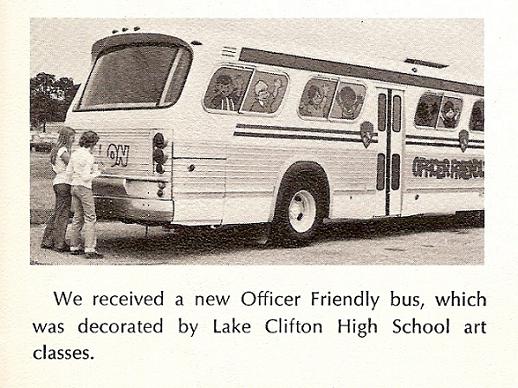
Photo courtesy Bill Manzke
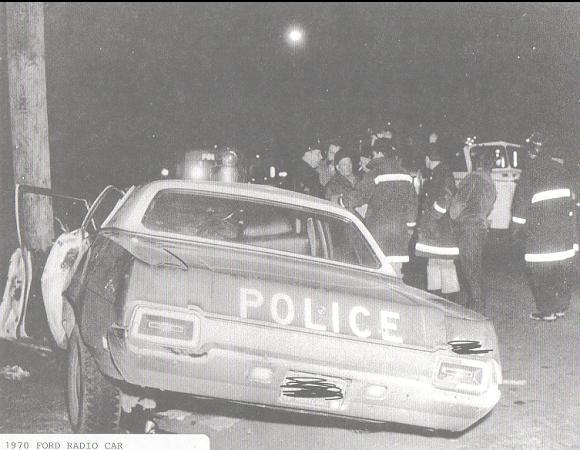
COURTESY SGT. ROBERT FISCHER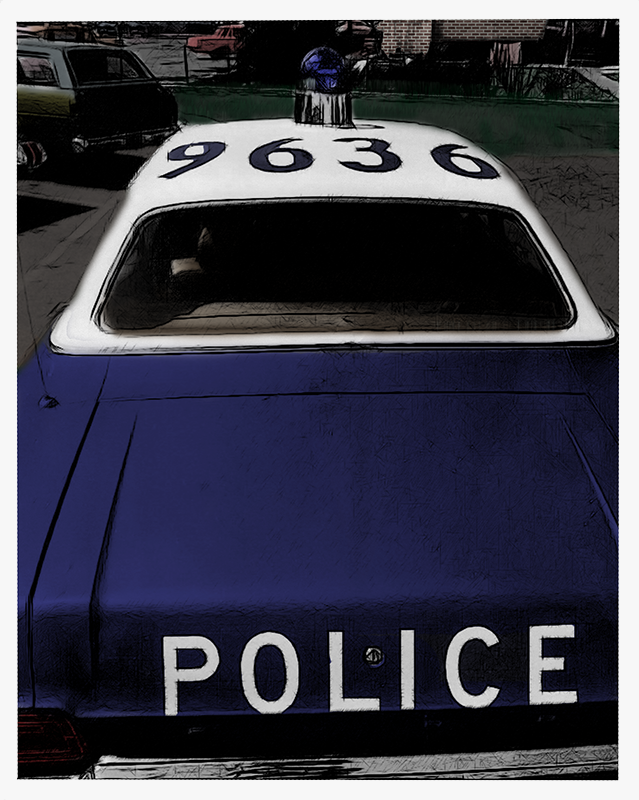 Sun Paper Photo Courtesy of my future Son-in-Law Matt Zembower
Sun Paper Photo Courtesy of my future Son-in-Law Matt Zembower
In 1971 the Department started adding Shop Numbers to the Roof, or Trunk of radio/patrol cars so that "Fox" could more easily identify officers from the sky. This was for both officer safety, and to more easily combat crime; as while in the air the observer could tell specific units where suspects on the ground were hiding.
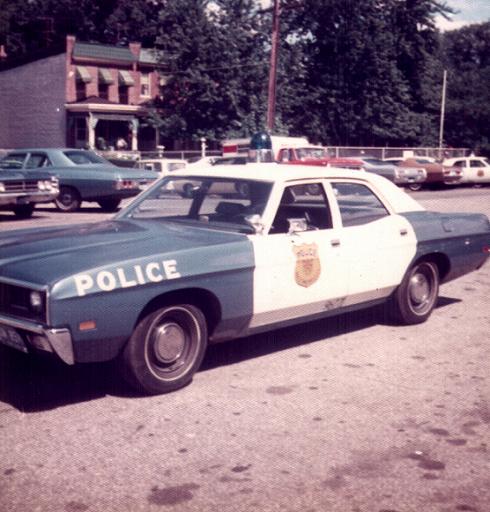
COURTESY OFFICER W.M.HACKLEY
1971 Ford shop # 9677 635 car Northwest District
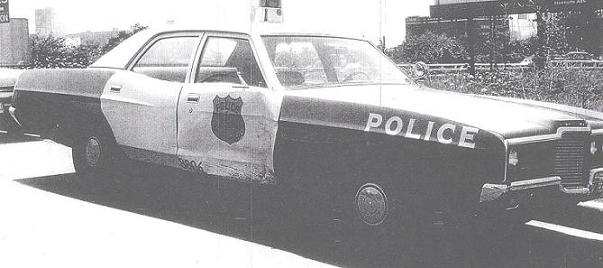
COURTESY SGT. ROBERT FISCHER
1971 FORD
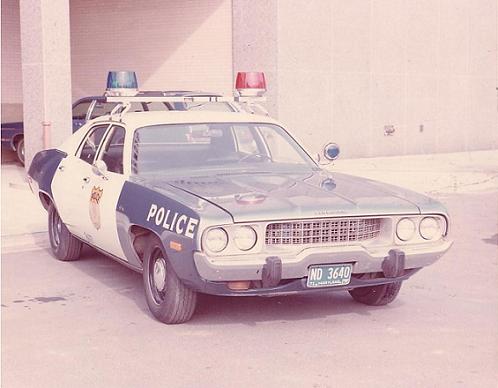
1973 Plymouth Satellite TEST CARS
A double light bar was never adopted.

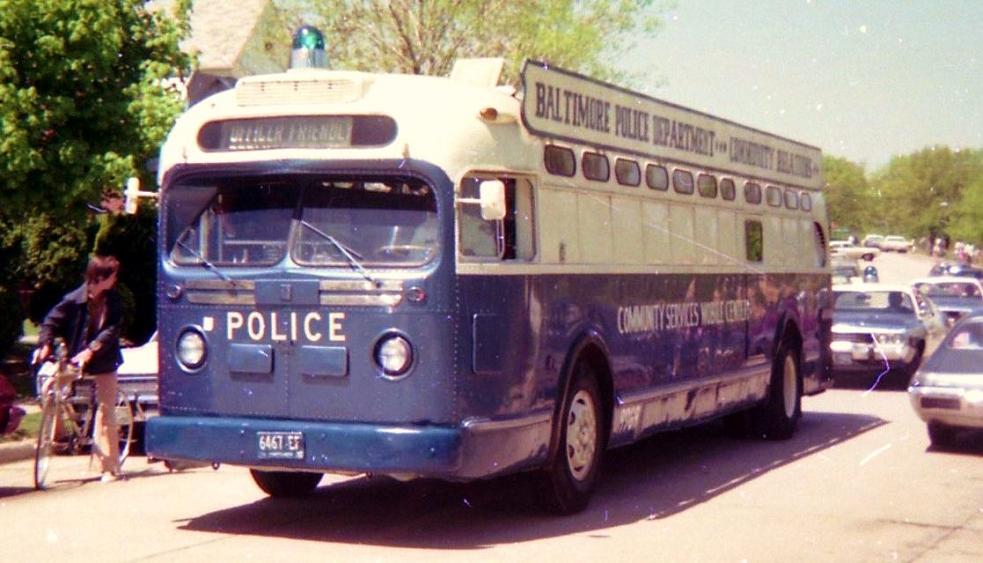
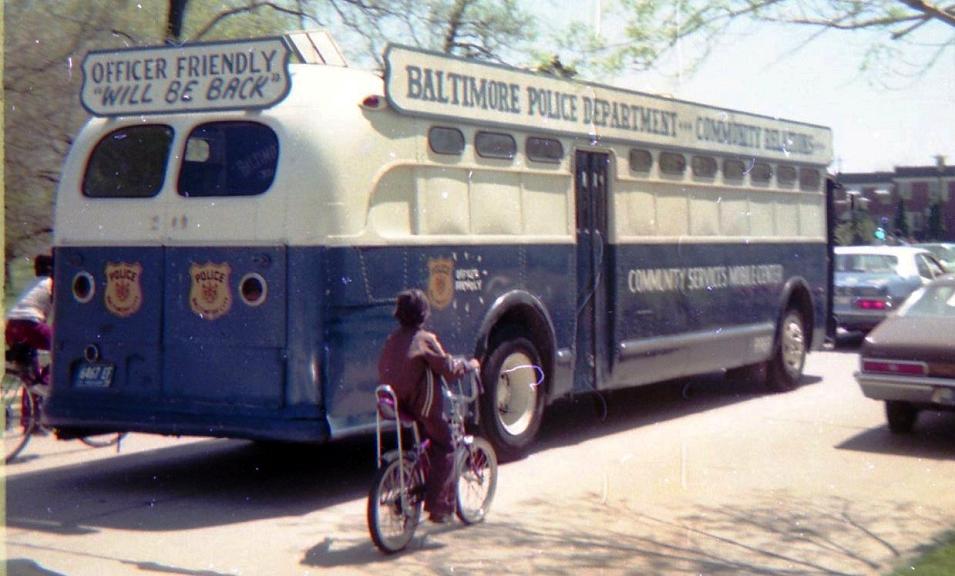

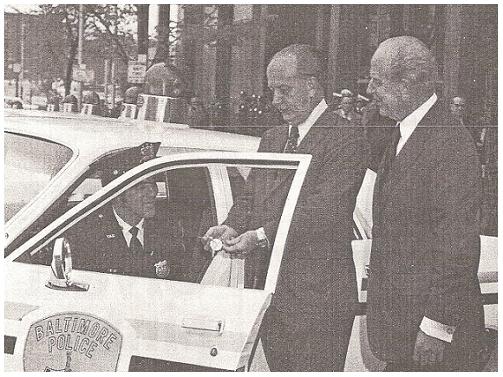
BPD NEWSLETTER
Commissioner Donald D. Pomerleau, members of the Command Staff and Officers representing the nine Districts and the Tactical Section were on hand recently when Mayor William Donald Schaefer presented the keys for the new Police Department Vehicles. The 200 new "air-conditioned" Plymouth are white with red and blue stripes on the sides
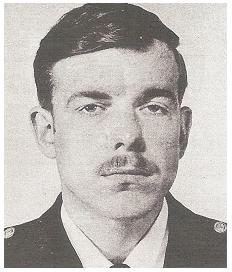
BPD NEWSLETTER
Officer Succumbs To Exhaust Fumes
September 1975
Funeral services were conducted on Wednesday, September 17, 1975, for Southwestern District Officer Edward S. Sherman who died September 13, 1975, as the result of. a unique and tragic set of circumstances. Officer Sherman, 28, a 5 year veteran of the Baltimore Police Department was found unconscious in his patrol car by two fellow officers who were on routine patrol.
The following excerpts from investigative reports shed light on what caused the officer to succumb to carbon monoxide poisoning: "At about 0718 hours this date, Officer Gary Martin and Officer R. Gooden, working 812 car, responded to the rear of Edgewood Elementary School . . . to try up same. Upon arrival, they found 811 car . . . on the rear lot with the motor running and all of the windows rolled up tight. "The car was butted against a chain link fence with a deep undergrowth (of weeds) . . . After attempting to arouse the officer by beating on the windows . . . Officer Martin broke the right front window and pulled Officer Sherman from the vehicle. While on the scene Officer Martin checked Officer Sherman's vital signs and could find none. . . " Extensive tests were made using the same automobile in an effort to ascertain exactly what caused carbon monoxide, in amounts sufficient to cause a fatality, to accumulate in the passenger area. Results of these tests pointed to three factors, which in the opinion of the experts, caused the high carbon monoxide level:
1. The patrol unit was backed to a chain link fence which was covered by a high growth of weeds.
2. The engine of the vehicle was left running" for an extended period of time. All of the windows were closed. The heater was not in use.
3. A small strip of rubber molding (weather stripping) underneath the trunk door near the locking mechanism was missing. (See photograph below.)
Subsequent tests made on 1973, 1974 and 1975 model marked patrol units indicated that the absence of any of the above-listed circumstances would not have caused fatal levels of carbon monoxide to accumulate in the passenger section of these vehicles.
Commanding officers subsequently caused an inspection of all vehicles in all districts and divisions in order to determine if the rubber molding was intact and that the rubber grommets (where appropriate) on the trunk floor were in place. Ongoing checks will continue. The rubber molding or rubber grommets can be repaired or replaced quickly in any defective Departmental vehicles.
In order to prevent similar tragedies in the future, all motor vehicle operators are to make certain that the rear of the vehicle is clear of any obstruction when it is to be parked with the engine running. Additionally, windows should be opened as far as comfort permits whenever heaters are in use.

BPD NEWSLETTER
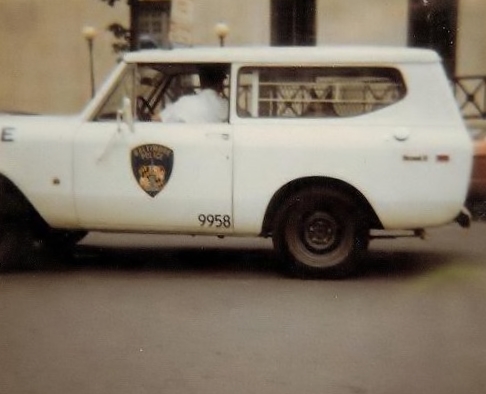
Photo courtesy Officer Mike Caplan
1970's Scout K9 unit

PHOTO COURTESY OFFICER MICHAEL CAPLAN
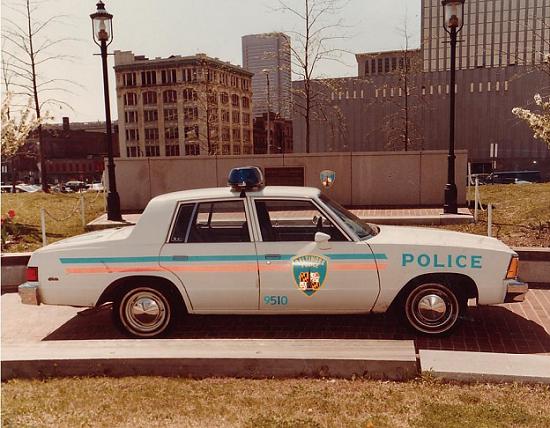
1974 Chevrolet Malibu
Baltimore Police experimented buying former
Rent-A-Cars, as a cost-saving method, that proved unreliable.

Photo courtesy Bill Manzke
1974 Chevrolet Malibu

Photo courtesy Officer Mike Caplan

Photo courtesy Officer Mike Caplan

PHOTO COURTESY OFFICER MIKE CAPLAN
In 1975 the new white color and striping scheme were phasing out the old blue & white unit

Photo courtesy Officer Mike Caplan
1970's VOLVO on Patrol on Belair Rd., Northeast District My Uncle Patrolman Mike Driscoll test drove one of these for the City
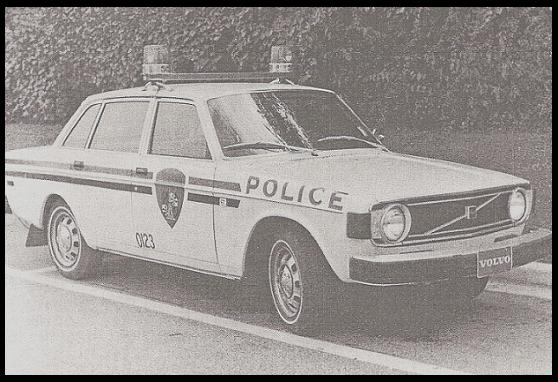
BALTIMORE POLICE NEWSLETTER
Representatives of the Volvo Corporation of America recently loaned the Department on a trial basis a 1974 Volvo. The air-conditioned four-cylinder marked unit is being compared in a performance study with a 1974 Plymouth. The study is designed to determine the feasibility of utilizing a smaller vehicle on patrol. It is currently deployed on a high mileage post in the Northeastern District for 30 days and then will be switched to the Central District for a comparable time span on a post with low mileage and heavy traffic.
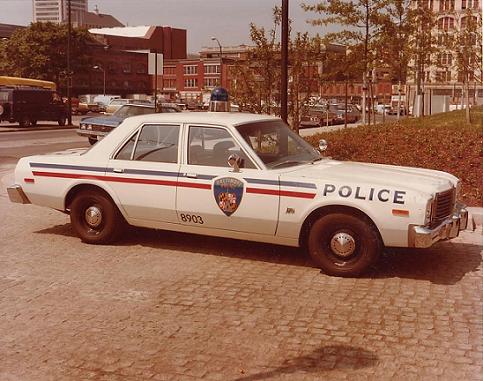
1975 Dodge Aspen
Former Rent-A-Car

1975 Ford Maverick
Former Rent
Rent-A-Car
Northwest District Parking Lot
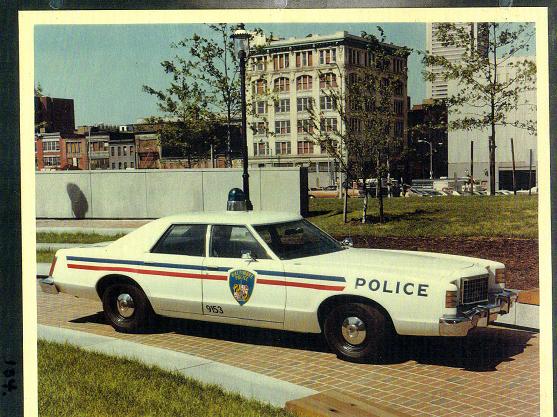
COURTESY SGT. ROBERT FISCHER
1978 FORD LTD
SHOP# 9153

Courtesy Joe Wiczulis
In 1982 Officer Marion Wiczulis, Traffic Enforcement, in an unmarked cruiser
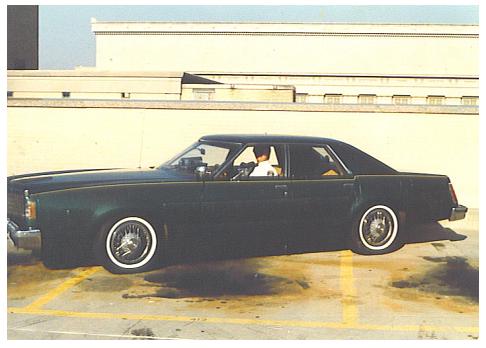
Courtesy Joe Wiczulis
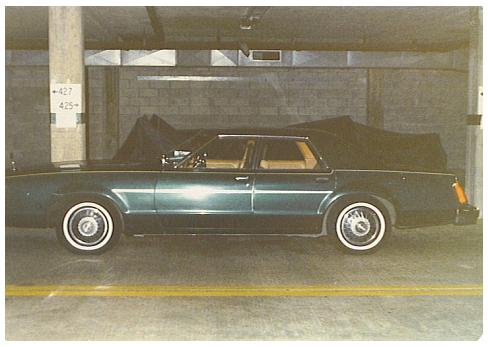
Courtesy Joe Wiczulis
This Traffic car was the only one in the fleet to have whitewall tires and red lights, which were specially approved by Colonel Dick Francis.

Courtesy Joe Wiczulis
The Following 2 Pics came to us courtesy of retired Lieutenant Robert Wilson
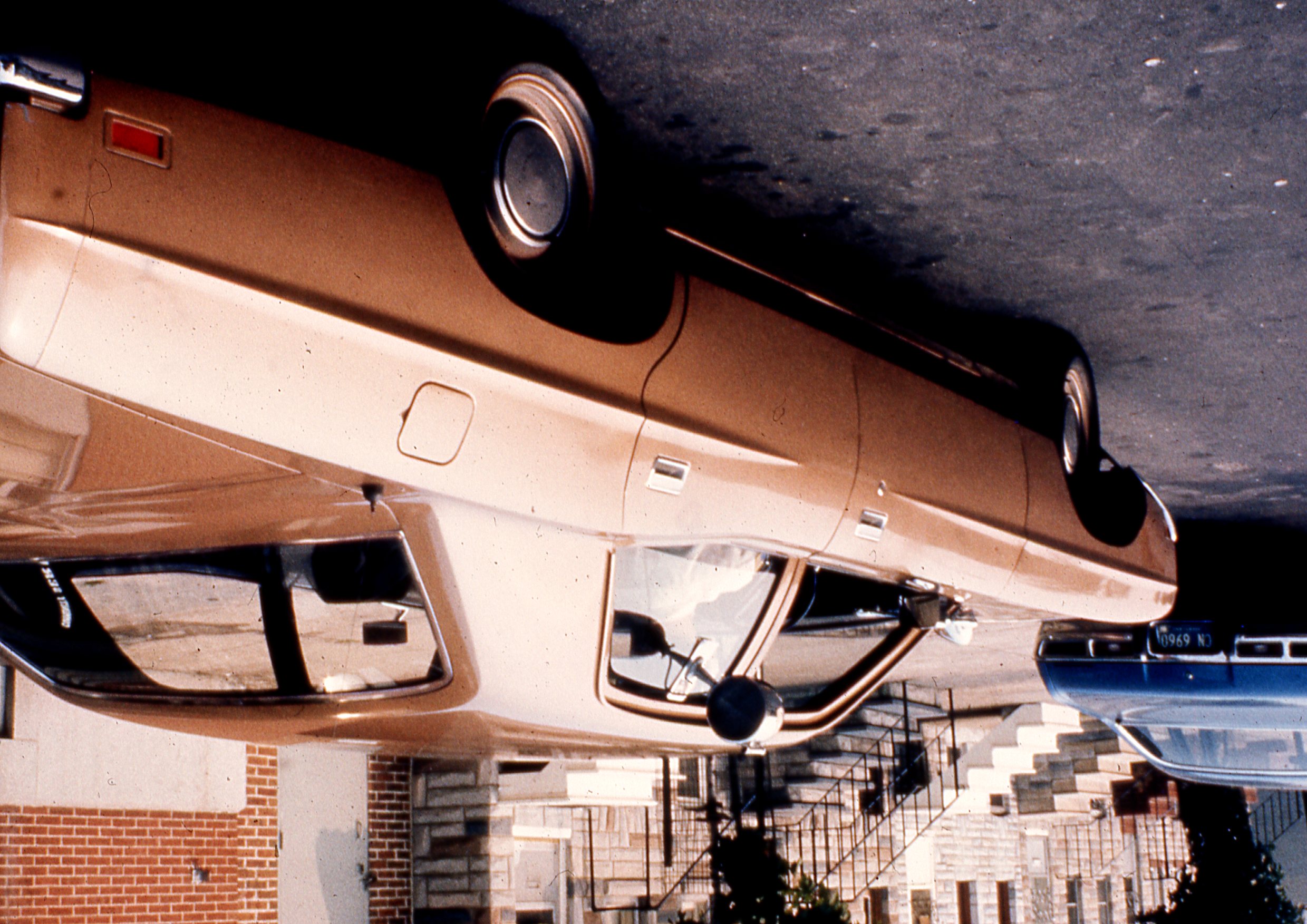
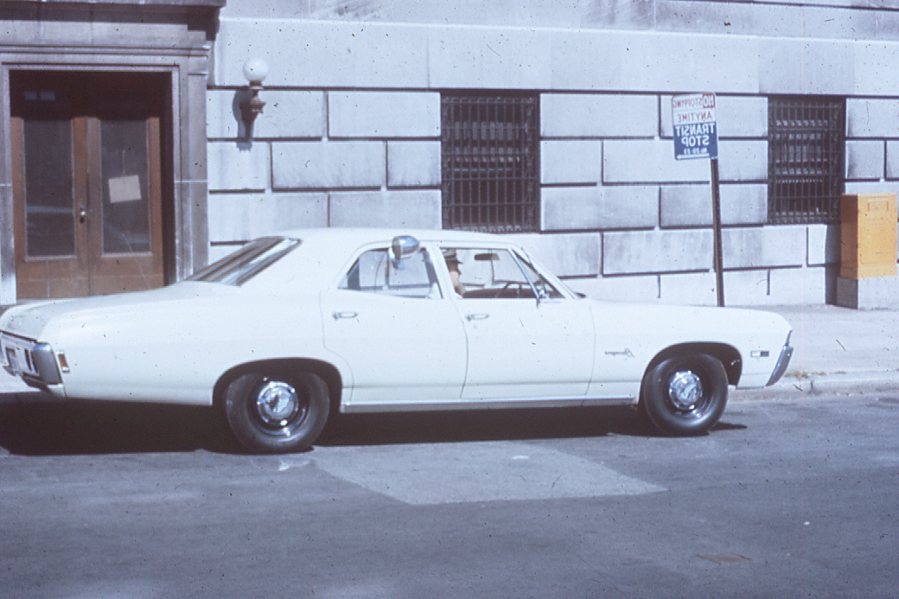

Officers at the City Fair 1979
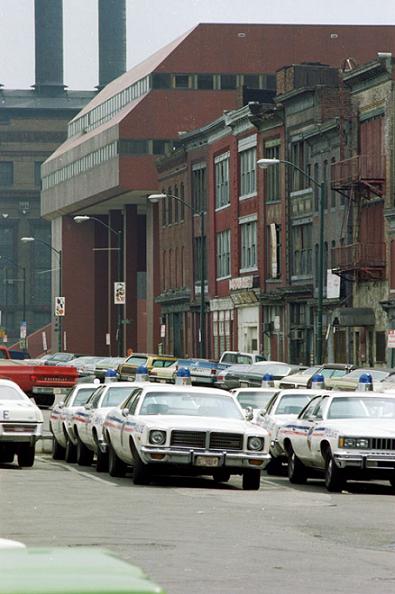

OFFICER W.M. HACKLEY PHOTO
1978 Harley Davidson Motorcycle restored by John Bayer, motorcycle mechanic U.S.Park Police.
October 1, 1990.
Motorcycle donated by the BPD to the United States Park Police Service for display in their lobby.
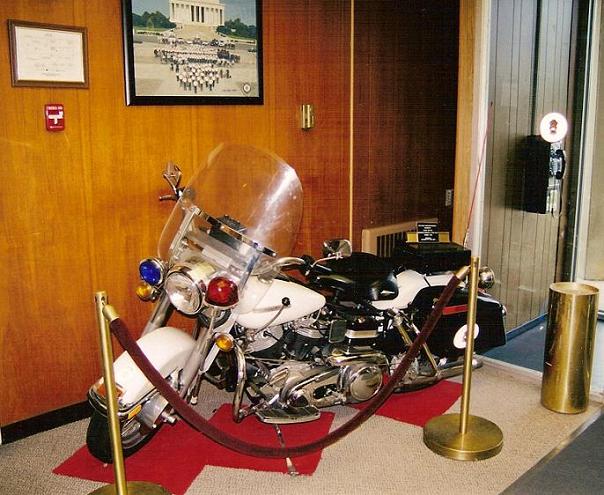
OFFICER W.M. HACKLEY PHOTO
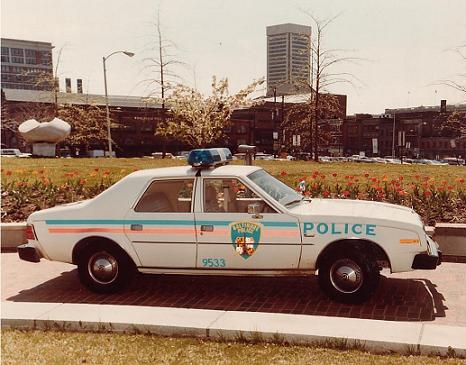
1980's AMC Concord
Proved totally unreliable for Police Work

AMC Concord
Pic taken by TIS Officer Scott Wills. This was Officer Wills vehicle, shop 9380, and was a TIS vehicle. It had the red and blue grill lights, and the red flashing spot light that traffic cars had.
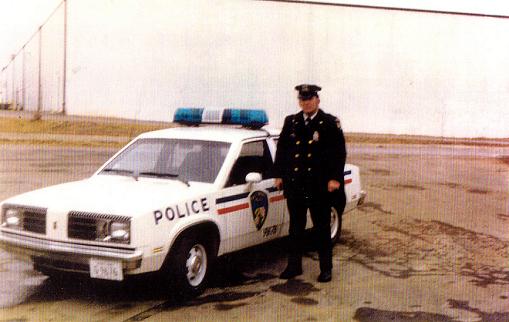
1980-1984 Oldsmobile Omega
Former Rent-A-Car
Officer Tom Leddon, NWD
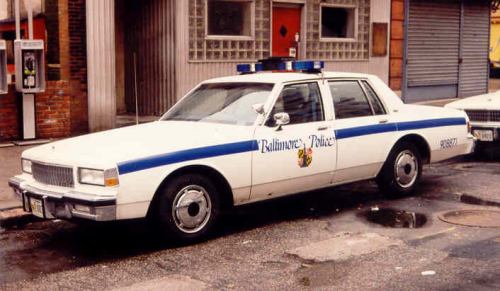
This is a 1989/90 Caprice
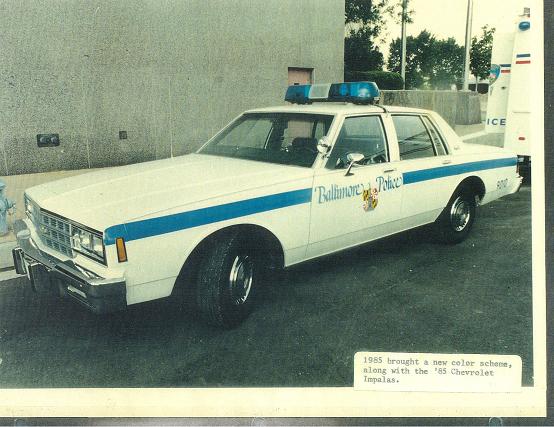
COURTESY SGT. ROBERT FISCHER
The Department has recently received 150 new vehicles that will bear the new "Baltimore Police" logo. They are 1985 Chevrolet Impalas equipped with V-6 engines, power steering, power brakes, and electronic fuel injection. Other equipment includes an automatic transmission and heavy-duty seats with extra padding. The new units are being placed in service throughout the Patrol Division, Tactical Section, Traffic Division and Crime Resistance Unit. Thirty new unmarked vehicles of various makes and models have also been added to the Department's fleet. I came on in 1987 and this was the first car I drove
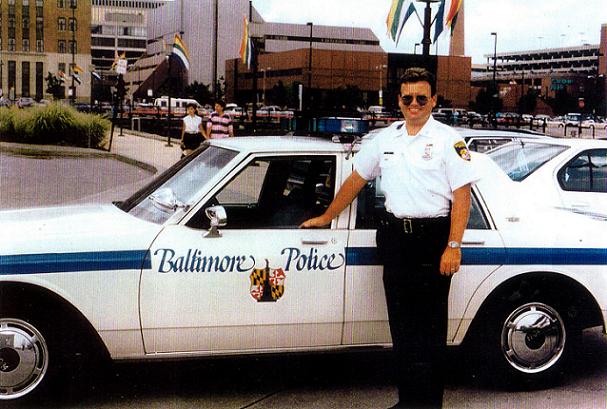
1985 Chevrolet, Don Healy, retired as a Major.

BALTIMORE POLICE DOOR SHIELDS

Courtesy of Jobosto
How's this for someone needing a hot shot, and having things ready to go when you arrive.

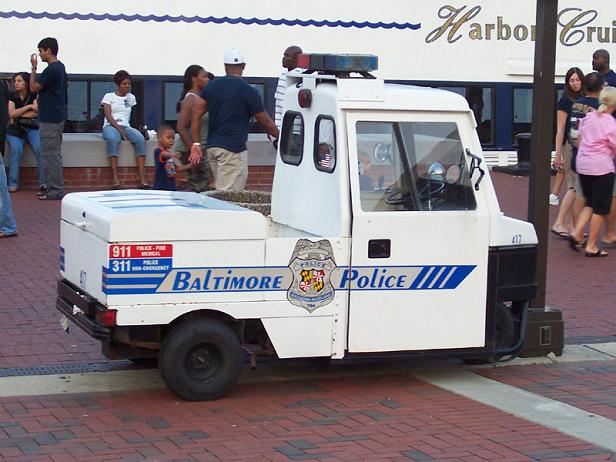
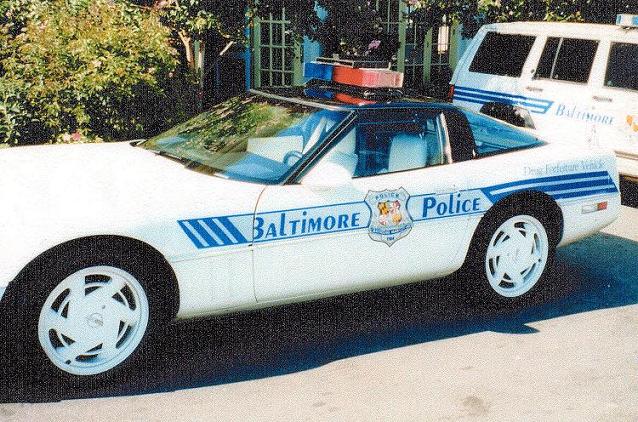
1990'S CORVETTE
CONFISCATED FROM A DRUG DEALER
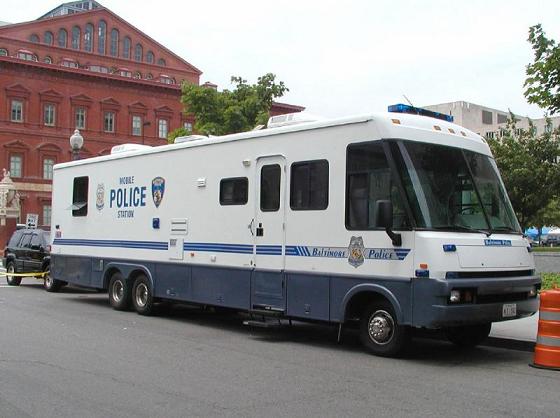
1990'S MOBILE COMMAND CENTER
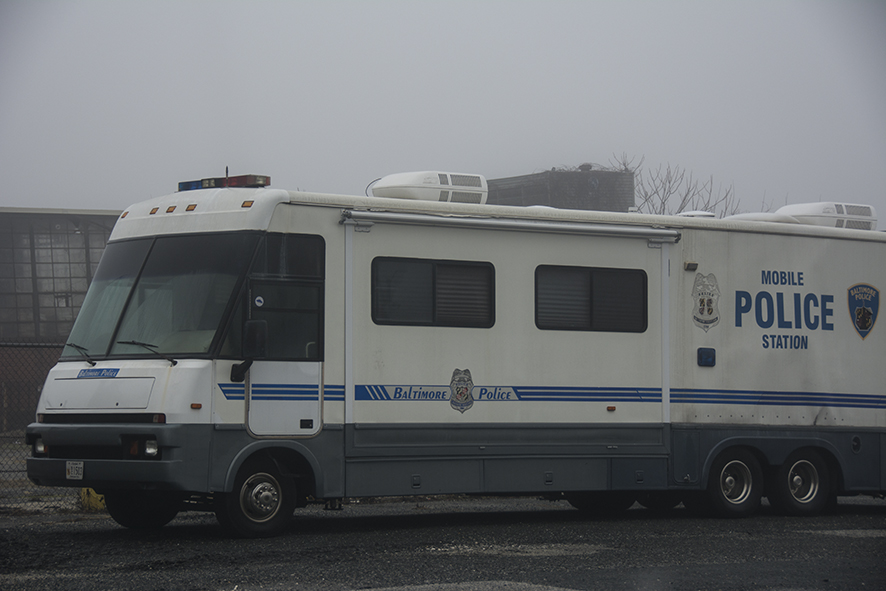 2014
2014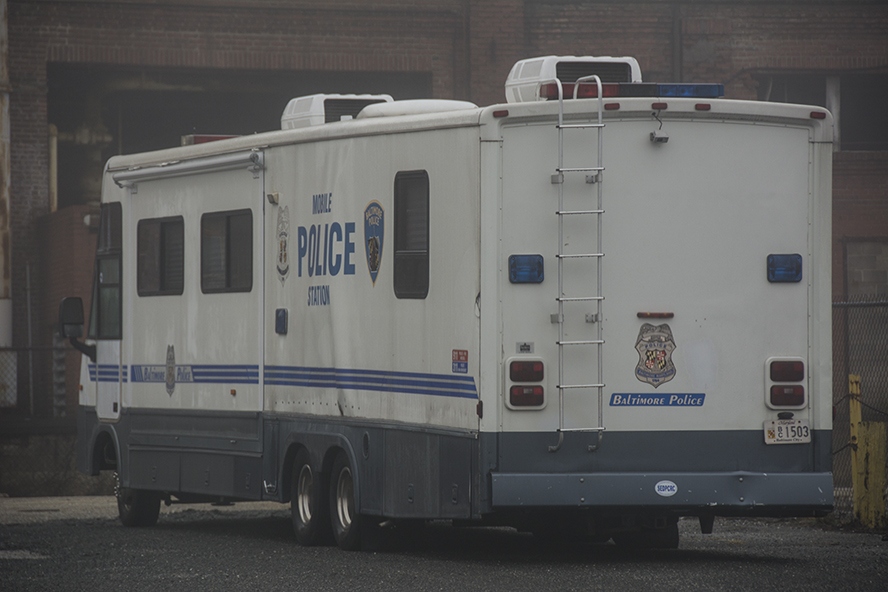 2014
2014
The Following 2 Pics came to us courtesy of retired Lieutenant Robert Wilson

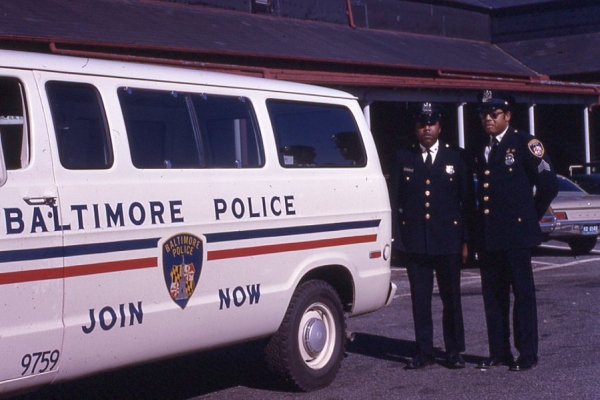
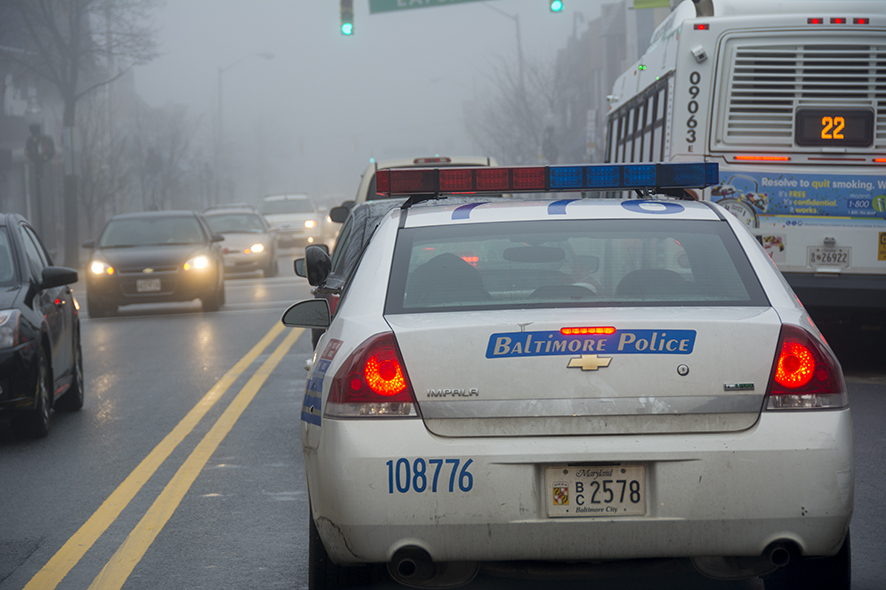 Jan 2014
Jan 2014 Jan 2014
Jan 2014 Jan 2014
Jan 2014  Jan 2014
Jan 2014
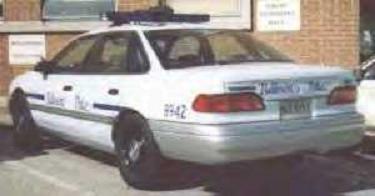
1992 FORD TAURUS
VEHICLE WAS PAINTED A BABY BLUE COLOR TO GET AWAY FROM WHAT COMMISSIONER EDWARDS WOODS SAID WAS AN AGGRESSIVE WHITE. BLUE SCRIPT LETTERING AND NO DOOR SHIELD
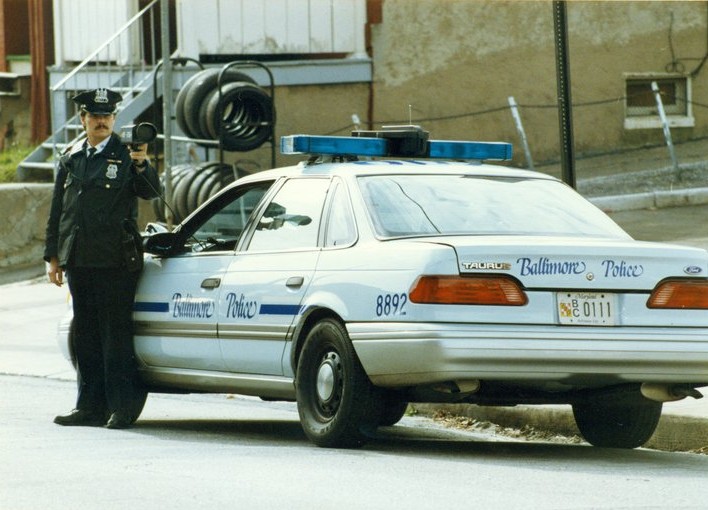
1992 Ford Taurus in the new "Baby Blue" "Powder Blue" color scheme that was begun by Commissioner Edward Woods. At the press conference, he stated that "They are the prettiest Police Cars I have ever seen" later on he said, " I just wanted to get away from the aggressive WHITE cars".
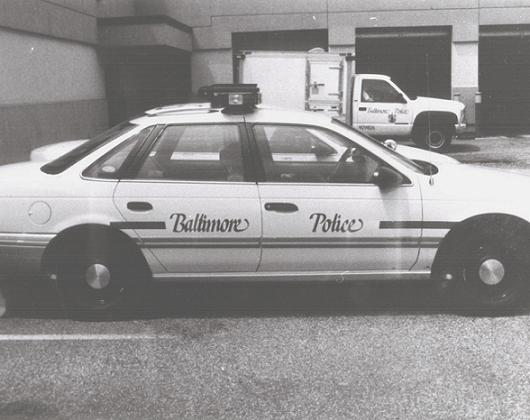
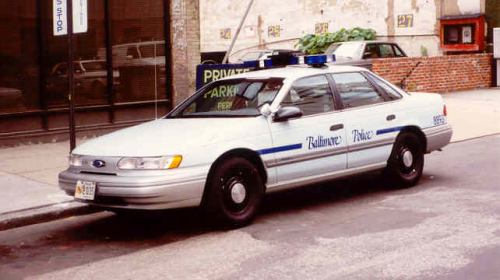

1995 Chevrolet

1997 Ford Crown Vic Police Interceptor

PHOTO COURTESY OFFICER MIKE CAPLAN
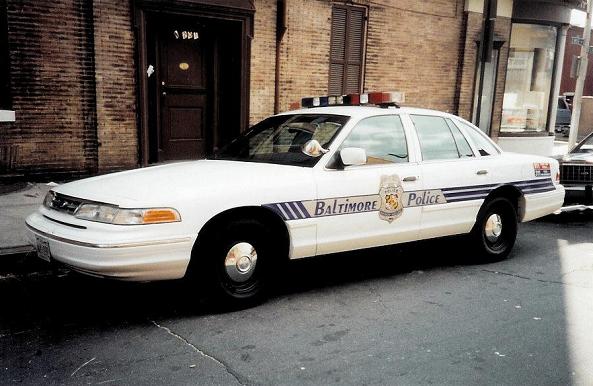
PHOTO COURTESY OFFICER MIKE CAPLAN
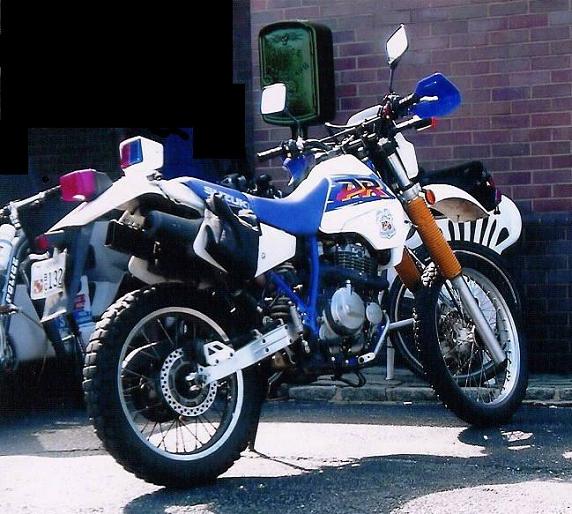
2000 Suzuki dirt bike
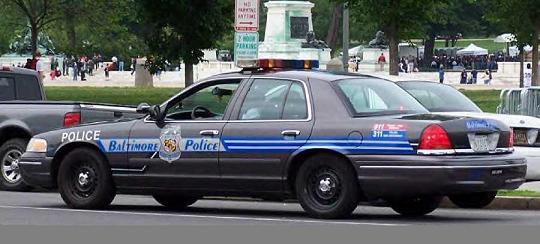
2000 FORD CROWN VIC POLICE INTERCEPTOR
CONVERTED FROM THE DEFUNCT HOUSING AUTHORITY POLICE DEPT.
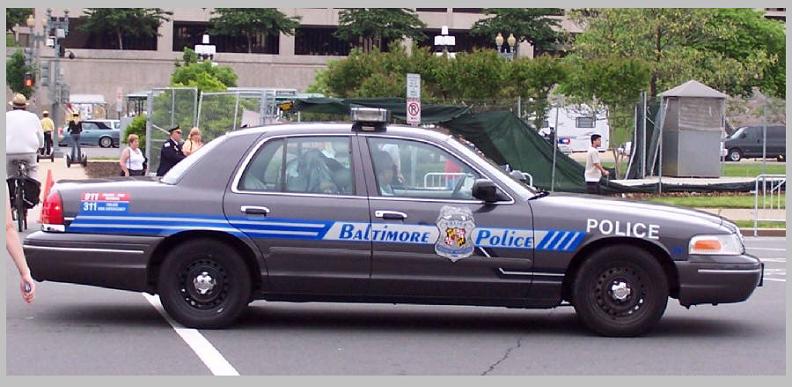

Mounted Unit Pickup & trailer

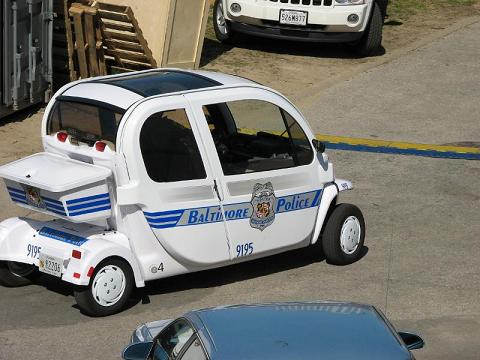
2006 MINIATURE ELECTRIC CAR
HARBOR PATROL VEHICLE
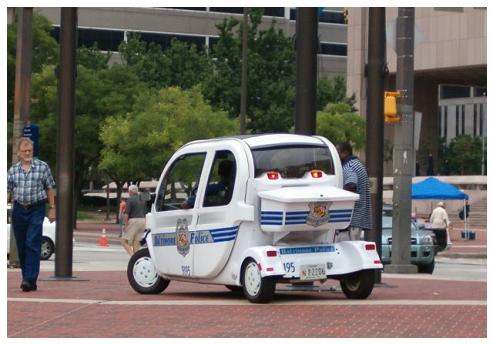 This picture and below article was found on the internet by a visitor to our fair city.
This picture and below article was found on the internet by a visitor to our fair city.
One of the funniest things I saw in Baltimore was this little electric police car. Not for what it was, which is funny all by itself, but for what the Officer did with it. Now, I know plenty of big macho cops that would probably be mortified to drive this thing. I thought it was adorable. They drive these up and down the harbor pier, along sidewalks and seen here in the plaza square. Pretty easy way to get around. I saw this little thing on the street and wanted to get a photo. I had my camera out and was walking towards it when all the sudden the distracted Officer ran right into a flagpole. PING went the pole!!! What was he thinking? There were 6 huge flag poles on the corner. You can see the size of them in the photo. Did he forget they were there??? Hahahahaaaaa! Everybody who was nearby turned and looked. It took the cop a few minutes to get out and look. I don't think he wanted anyone to see him. There was a nice dent in the huge flagpole and a little scrape on the front of his little car. OMG...how embarrassing! I'm still laughing.



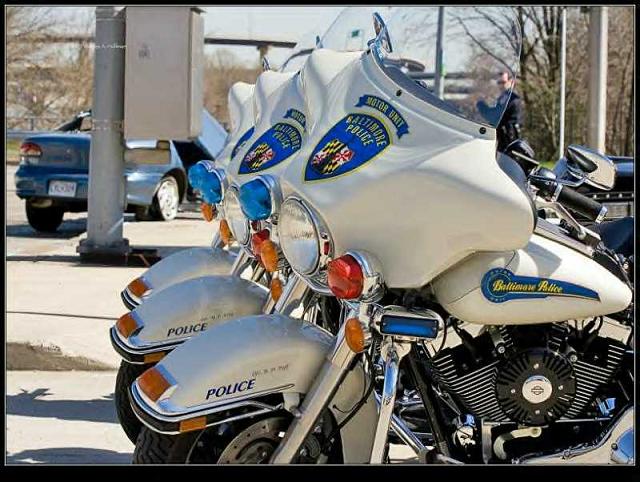


2006 MOBILE COMMAND CENTER

2000 FORD CROWN VIC POLICE INTERCEPTOR (P-71)
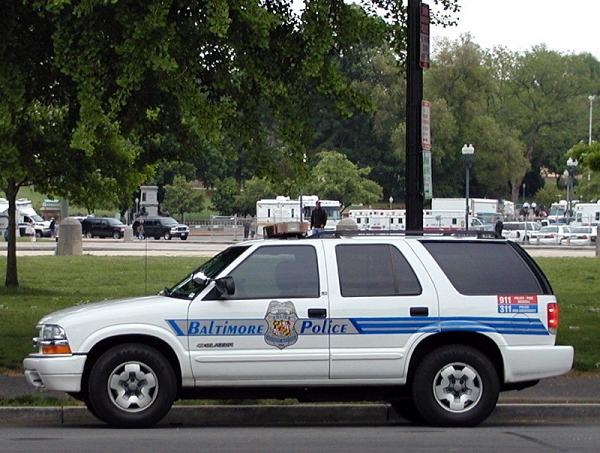
2002 CHEVROLET BLAZER

2000 FORD MUSTANG
TRAFFIC ENFORCEMENT UNIT
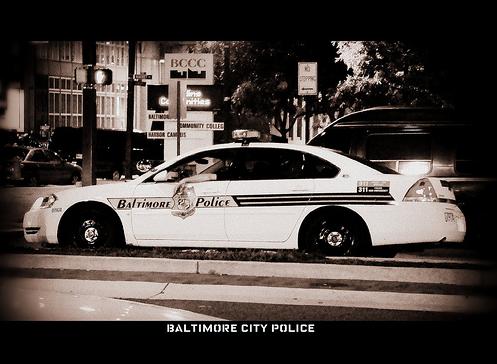

2006 Chevrolet Impala Patrol Car
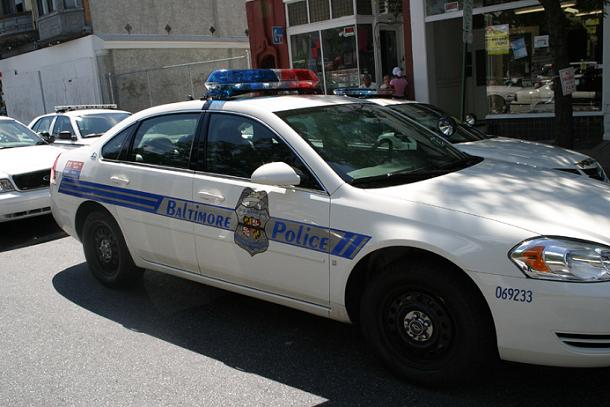
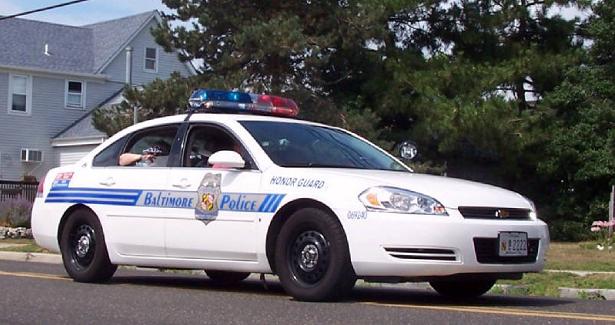
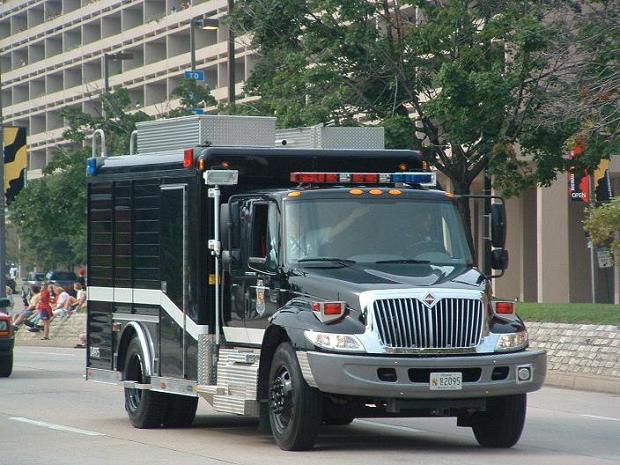
2006 EMERGENCY SERVICES UNIT# 7811

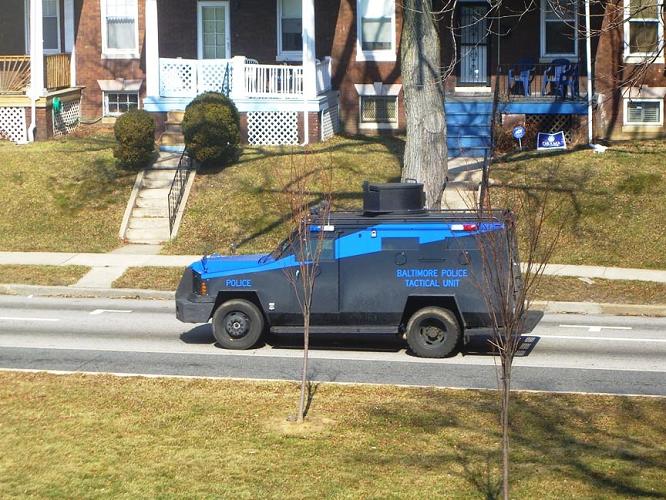

2009 Jeep
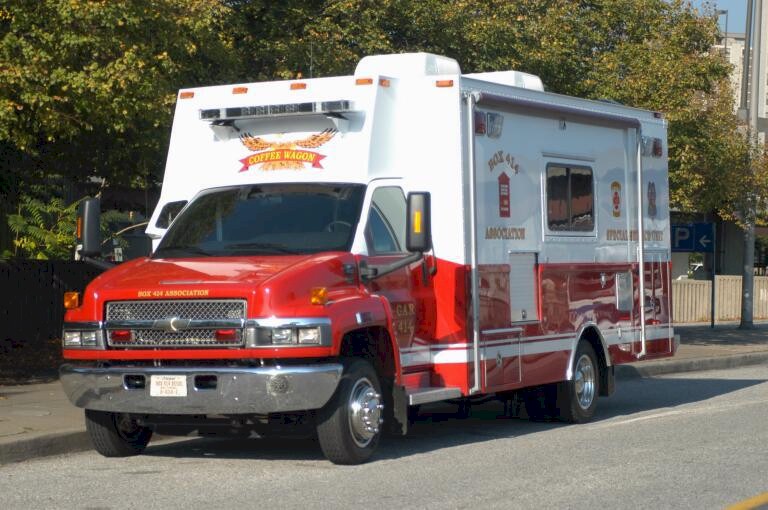
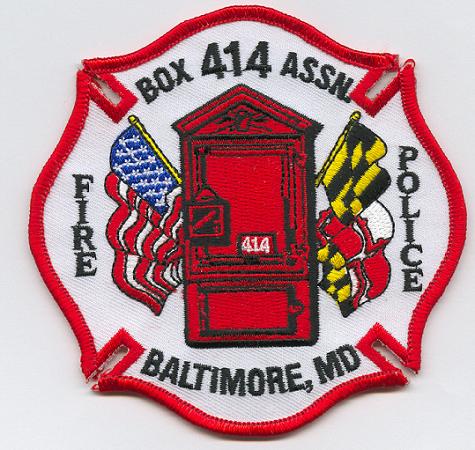
Box 414 Association, a voluntary service that furnishes hot coffee, sandwiches, at large fire scenes, or any other incident that requires Police and Fire/EMS personnel on the scene for extended periods of time.
They have served a very long time in the City of Baltimore providing much-needed relief to Police, and Fire personnel they deserve a lot of credit and warm wishes from those they have served so well. Thanks, guys for a job very well done.
 Baltimore, Ohio Police vehicle
Baltimore, Ohio Police vehicleCity police shifting from white to black patrol cars
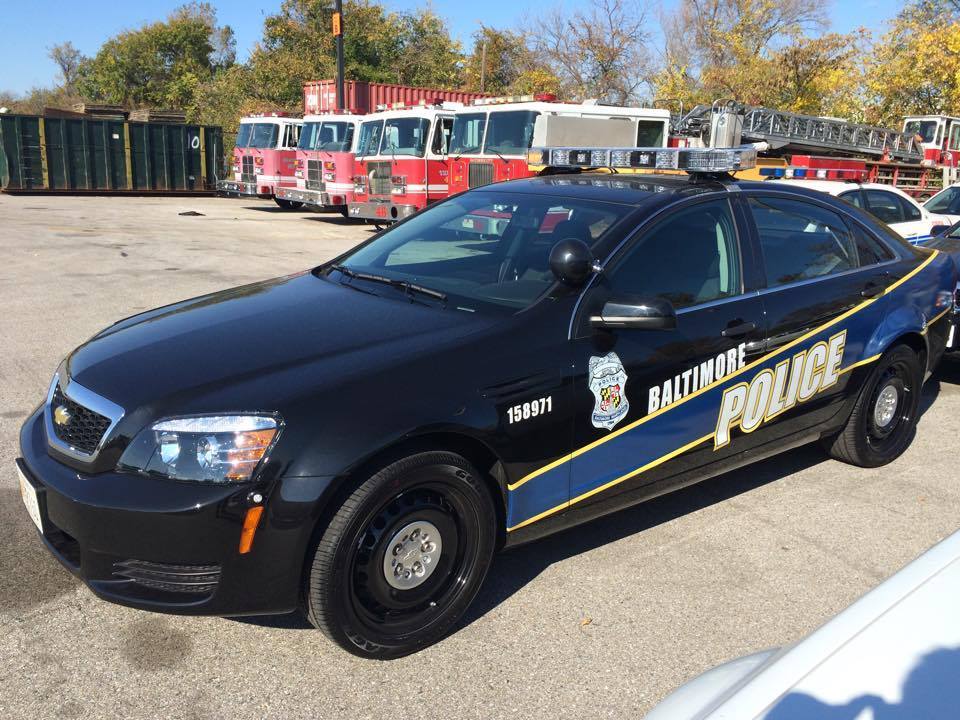
The 2014 Chevy - Baltimore City police car
(Courtesy of the Baltimore Police, Baltimore Sun)
![]()
Do you think Baltimore City police cars should be black or white?
Pretty soon, the city's white police cars will be a thing of the past.
The white Baltimore police patrol car — a familiar presence on city streets for decades — is slowly being phased out and replaced in a new color: black.
Over the next few months, residents can expect black-marked 2014 Chevy Caprice patrol cars cruising the streets of Baltimore. The change was requested by officers who wanted to appear more professional in updated cars.
The new cars are adorned with a blue streak that runs at an angle on both sides of the car along with a police shield and "Baltimore Police" in white lettering. Police FoxTrot helicopters and many mobile command trucks have had a similar design for more than a decade.
"It's one that we're proud of, and it's one that we think the people of Baltimore are really going to like," police spokesman Lt. Eric Kowalczyk said.
It's not the first time the department has embarked on a new color scheme. The city's police cars were black after World War II when the color was the only shade available. Since then, the cars have been black and white, and then blue and white. In the 1990s, the department planned to shift to baby blue to present a "friendlier image," but the plan was shelved two years and $2 million later.Former Police Commissioner Edward T. Norris said he wanted to switch to black because he felt the white cars were too closely linked to, of all things, a 1970s television comedy. He also thought sleek black cars would give officers a sense of pride. The change was announced but never occurred.
The current switch is also being driven by the department's desire to boost officers' flagging morale. Less than 10 percent of Baltimore officers described morale as "good" in a department survey last year.
Commanders believe that raises approved last year, a more favorable work schedule and the new patrol cars will help change that. The cruisers also feature seats that adjust more easily and light and siren switches in more accessible locations.
The new black cars will be added to the current fleet as older vehicles are replaced, Kowalczyk said. The changeover won't cost additional money, officials said.
The department bought 30 black cars this year, and they are currently being outfitted for patrol.
Baltimore police union president Gene Ryan believes the cruisers are a big improvement. A committee of officers of various ranks picked the design, color scheme, lettering, and marking, police said.
"If you let somebody have ownership, it always boosts morale," Ryan said. "That car is their office."
It's an iconic shift for the city.
Millions of television viewers recognize Baltimore's white fleet of Ford Crown Victoria Police Interceptors, Chevy Impalas and Caprices thanks to the police television drama "The Wire."
Before that, Kowalczyk noted, the 1990s TV show "Homicide: Life on the Streets," also based in Baltimore, featured different white cars from that era.
"Every design has been iconic in its own right, whether it's been seen on television shows or in the common understanding of the people of Baltimore," said Kowalczyk.
The Police Department has briefed some community groups on the change. Many have embraced it, especially if it helps officers do a better job. The city has significant problems to confront, they said, including more than 190 homicides this year.
"Times are changing... You're reaching into the millennial generation, and they're into a more modern and sleek look," said Joyce Green, president of the Central District Police Community Relations Council. "I want something that the officers like that they designed, and they can take pride in. And that should boost anyone's morale."
Black police cars are common in Maryland. Bel Air police are still changing over their fleet since making the shift to black in  after 25 years of white cars with green lettering. Howard County police and Maryland State Police also have black vehicles. Maryland Transportation Authority police switched to black in 1988.
after 25 years of white cars with green lettering. Howard County police and Maryland State Police also have black vehicles. Maryland Transportation Authority police switched to black in 1988.
"The primary justification was to achieve a new distinctive look, as the agency was in transition at the time," MdTA police spokesman Sgt. Jonathan Green said.
Police cars painted primarily white or a combination of white and black have been historically associated with policing. Some research shows those schemes are the easiest to distinguish as related to law enforcement.
Researchers have also studied whether white or black-and-white cars serve as better crime deterrents than other cars in other colors, and have come to differing conclusions.
Times are changing... You're reaching into the millennial generation, and they're into a more modern and sleek look. - Joyce Green, president of the Central District Police Community Relations Council
A 2009 Federal Emergency Management Agency study on the visibility and conspicuousness of emergency vehicles found that "no single particular color" appeared to be the optimal choice for emergency vehicles to be seen under varying conditions.
Mark D. Thomas, professor of cognitive science at Albany State University, researched whether color made any difference as to how fast the mind recognizes a police car.
Black-and-white cars, he said, are the most recognizable police cruisers because the color pattern has been most widely used by agencies. That combination, he said, also sticks out more than other shades.
But he also found the amount of time it takes the mind to recognize black-and-white cars versus all-white cars as police vehicles is less than half a second. The amount of time it takes the mind to recognize a black car as a police vehicle is also probably negligible, he said.
He said many police agencies use either white or a combination with white as the primary color because they believe it better represents "community policing," where officers aim to be visible and easily accessible. State police agencies, whose officers roam highways, often use dark colors, he said, because troopers want to sneak up on speeding motorists.
"If [police[ want something more stealthy, black is more stealthy than white," Thomas said. "But if they want something that will be seen more, especially at night, then they want white."
Baltimore police said they don't believe they'll lose any visibility with the new design.
"I don't think there's going to be anyone mistaking them," Kowalczyk said.
Past efforts to change patrol car colors have backfired. The department dumped the baby-blue scheme partly because many officers and residents felt the cars made the police look soft.
In 2001, the department began making the change to black when then-Mayor Martin O'Malley learned of the plan, according to Norris, who was the commissioner at the time.
Norris said O'Malley, now governor, demanded the commissioner stop the changeover because he felt black would project an image of a force that was overbearing and intimidating.
O'Malley could not be reached for comment Friday.
"So I painted everything else those colors," Norris said. "The command vehicles, the helicopter, everything else."
Norris said he also ordered other changes to boost morale to make up for the pay raises he couldn't give officers. He swapped out 9 mm service weapons for more powerful .40-caliber guns and lifted a ban on the use of espantoons — the wooden nightsticks that Baltimore officers had used for generations.
"You can't pay them what they deserve, but you can give them things that will help them in their jobs," he said.
The white cars especially rankled Norris when a research firm showed him that the lettering on the side of the cars matched the font used on the credits of the "Mary Tyler Moore Show."
Black police cars, he said, would have projected a tougher image.
"I just thought it commanded more respect," Norris said.
twitter.com/justingeorge
Copyright © 2014, The Baltimore Sun
EL The Following 25 Pics came to us courtesy of retired Lieutenant Robert Wilson








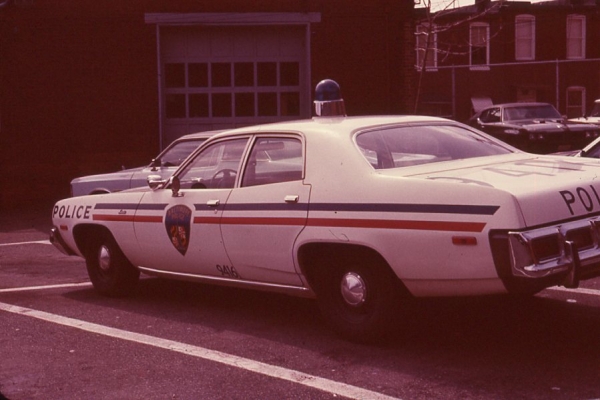
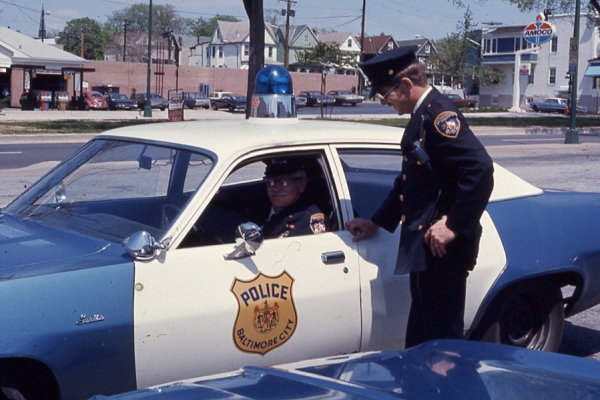

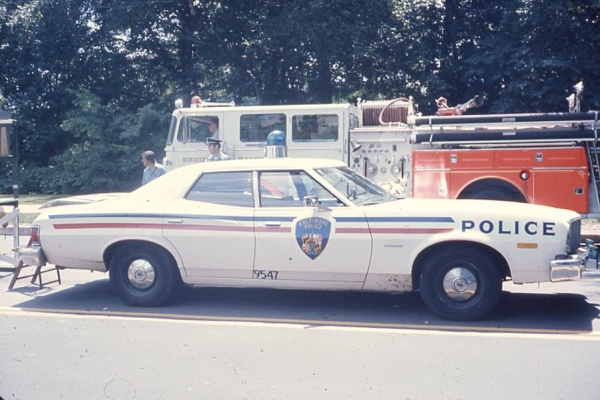
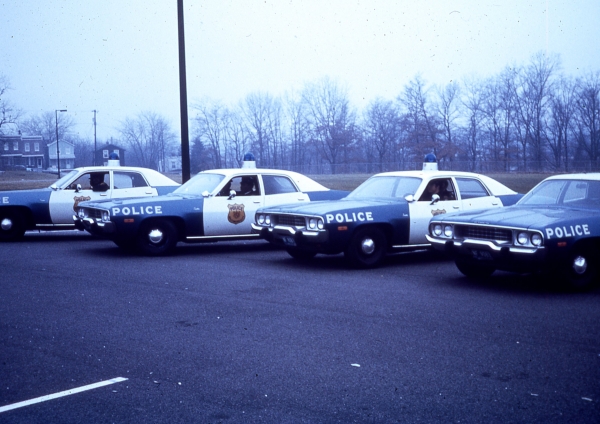
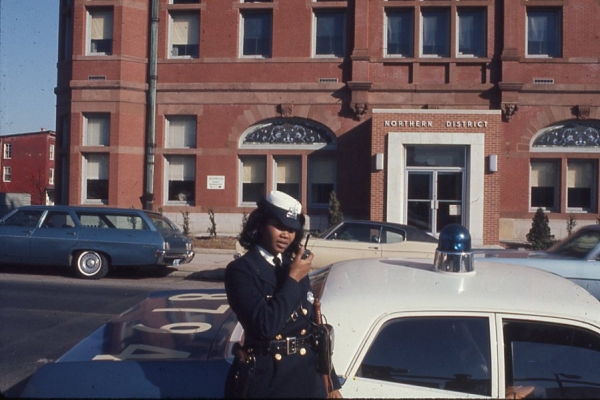
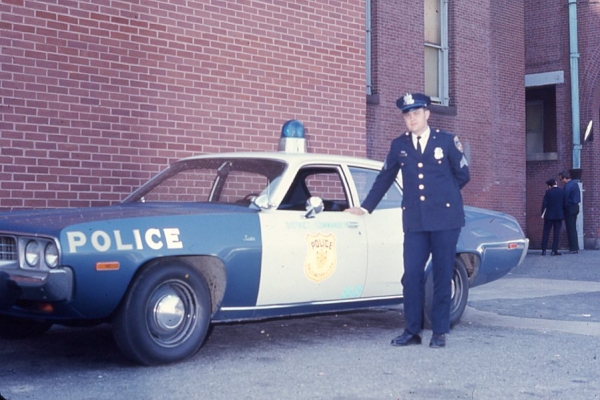




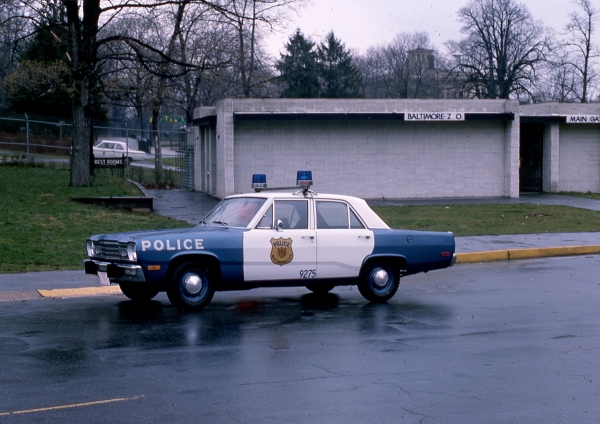
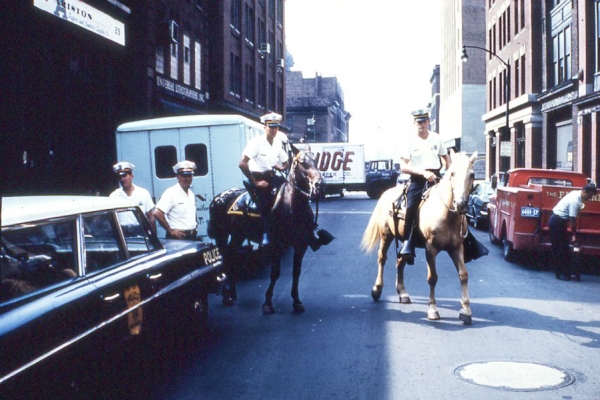



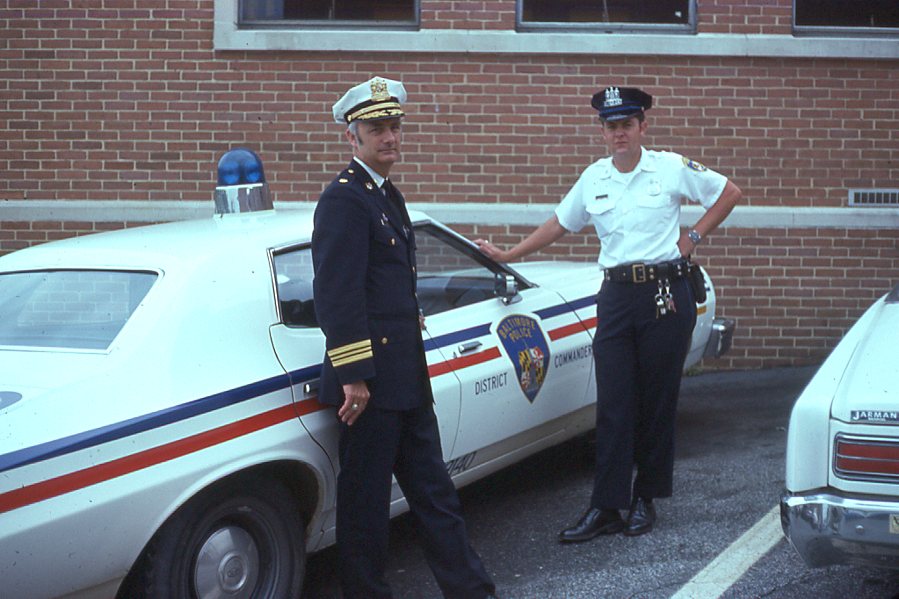
![]()
POLICE INFORMATION
Copies of: Your Baltimore Police Department Class Photo, Pictures of our Officers, Vehicles, Equipment, Newspaper Articles relating to our department and or officers, Old Departmental Newsletters, Lookouts, Wanted Posters, and or Brochures. Information on Deceased Officers and anything that may help Preserve the History and Proud Traditions of this agency. Please contact Retired Detective Kenny Driscoll.

NOTICE
How to Dispose of Old Police Items
Please contact Det. Ret. Kenny Driscoll if you have any pictures of you or your family members and wish them remembered here on this tribute site to Honor the fine men and women who have served with Honor and Distinction at the Baltimore Police Department. Anyone with information, photographs, memorabilia, or other "Baltimore City Police" items can contact Ret. Det. Kenny Driscoll at
Copyright © 2002 Baltimore City Police History - Ret Det Kenny Driscoll





